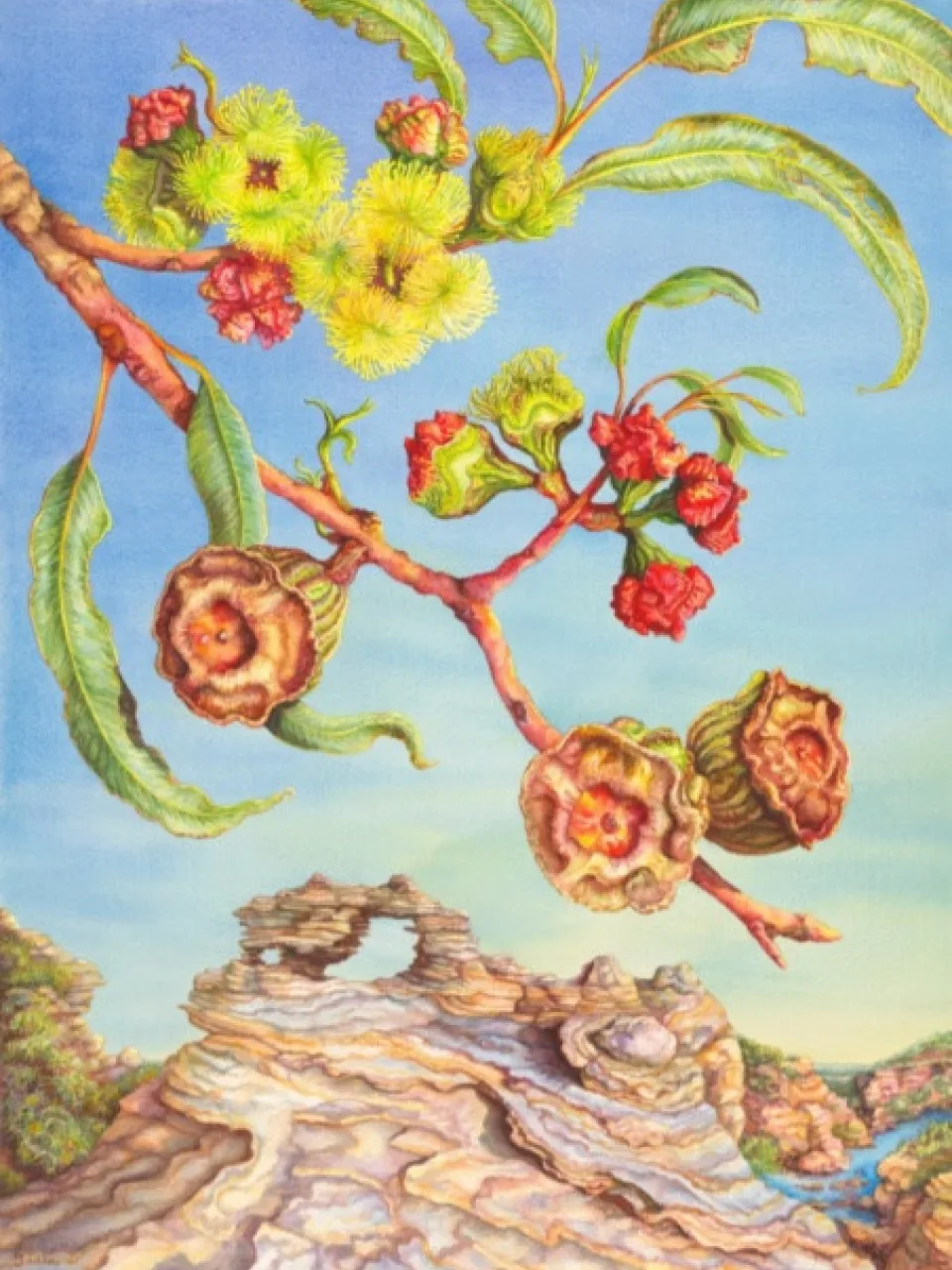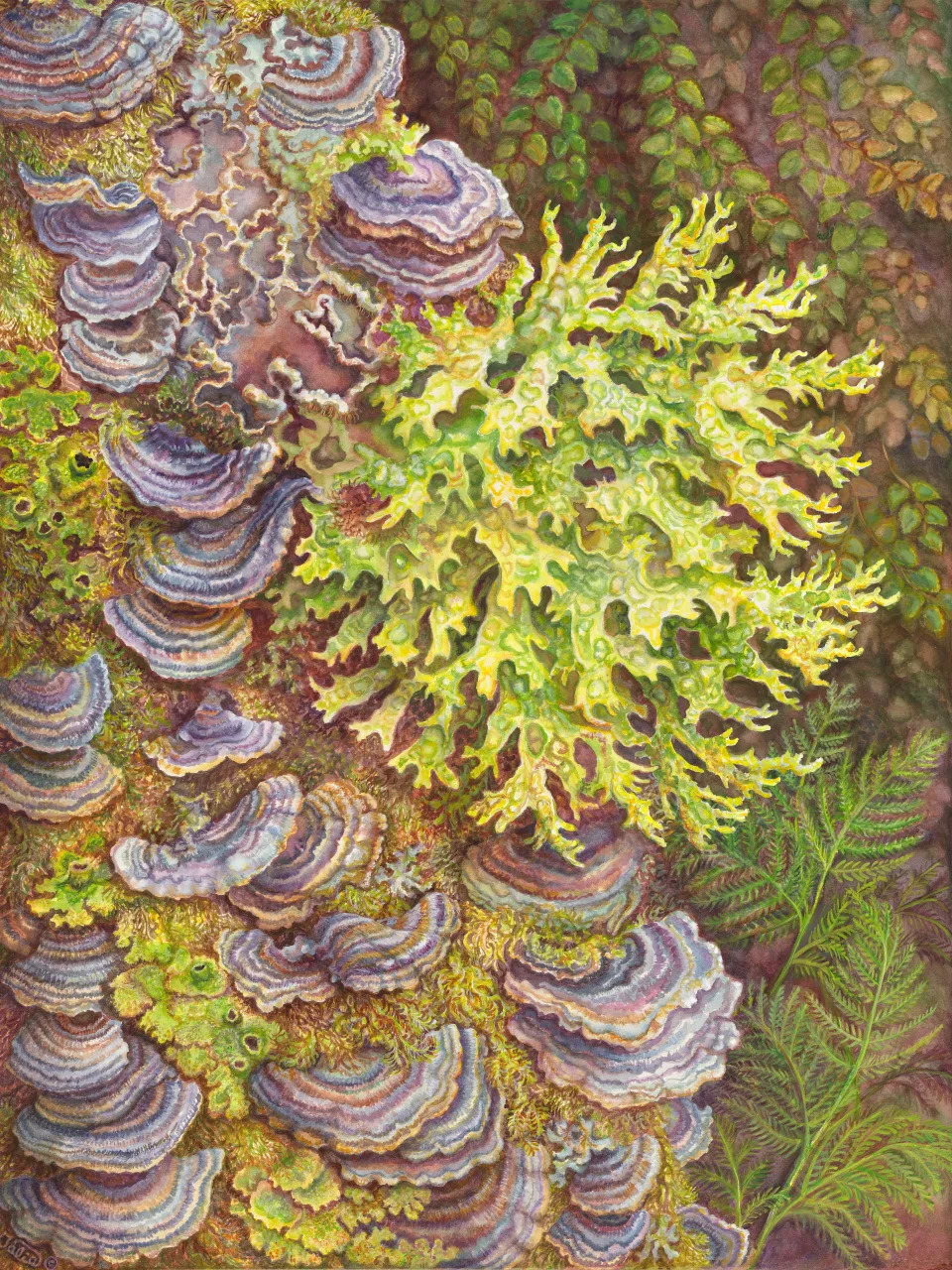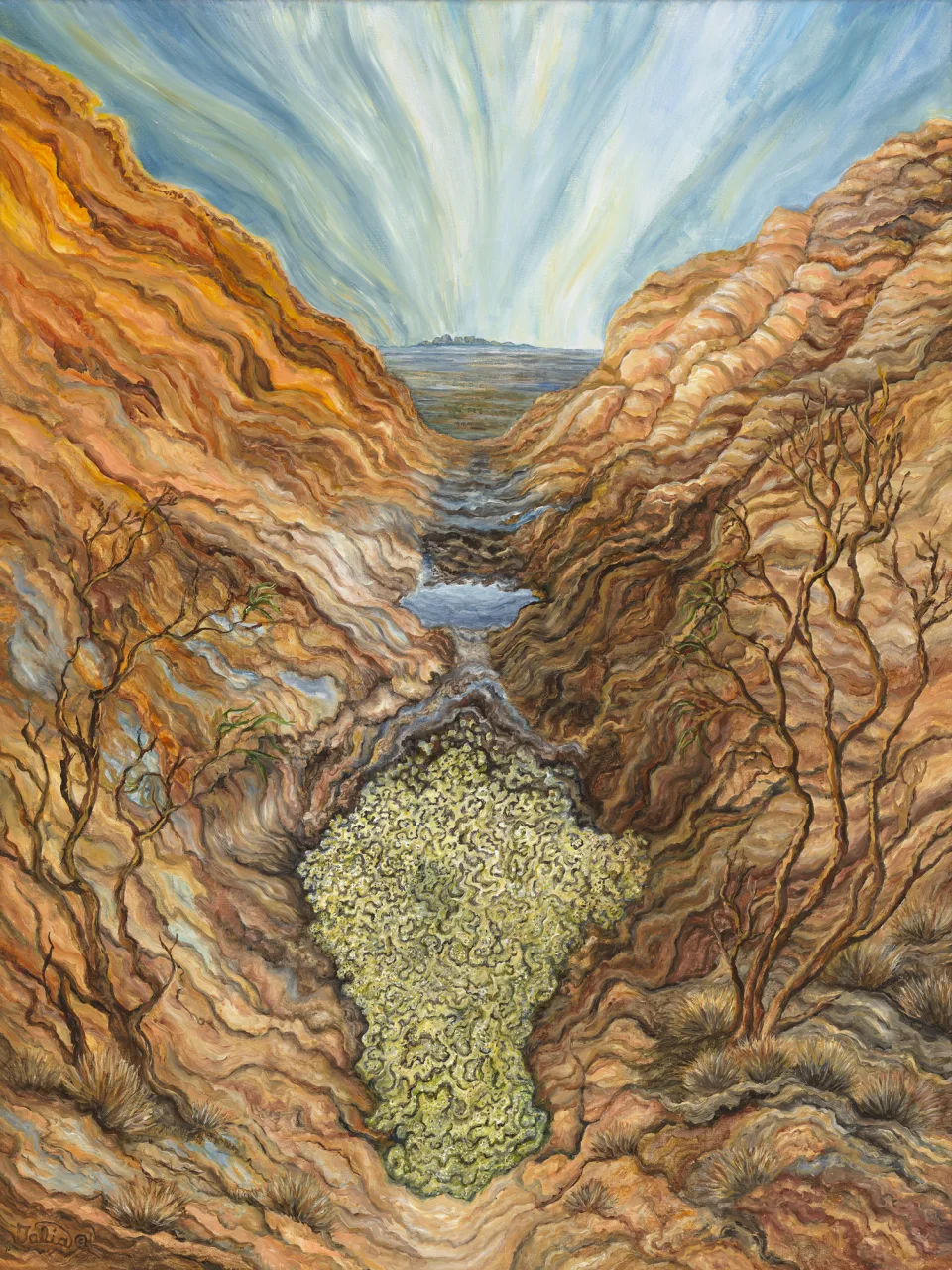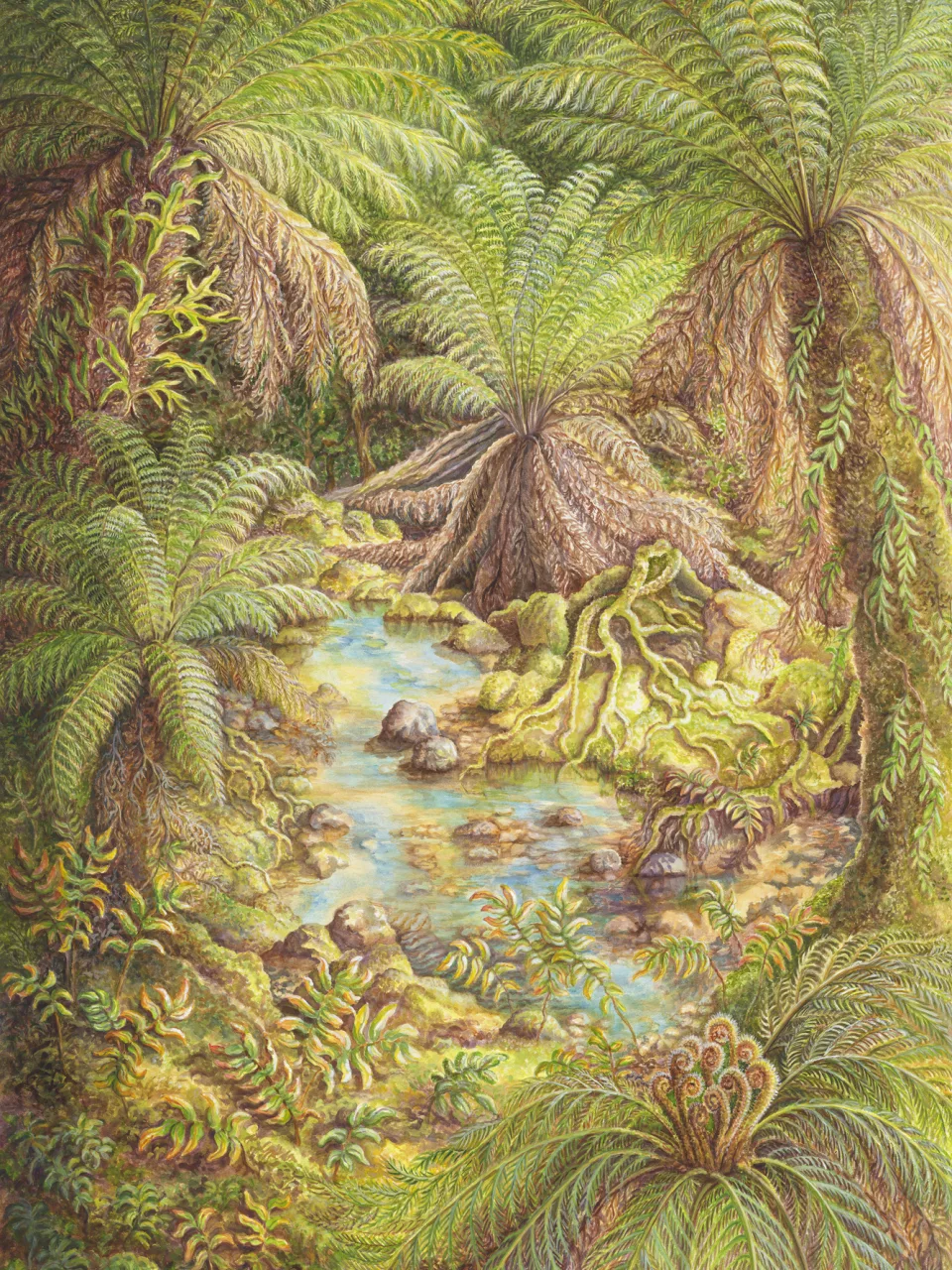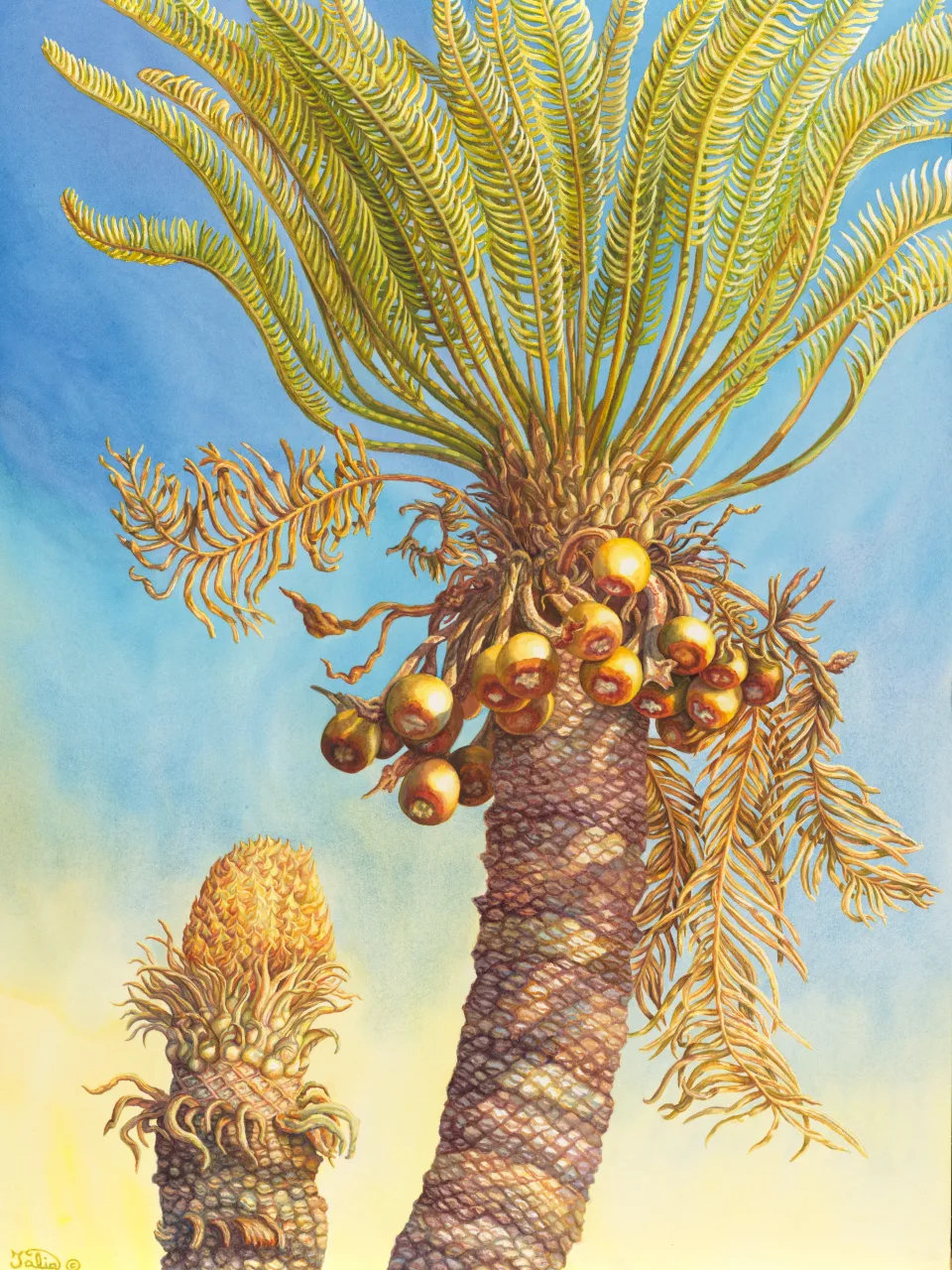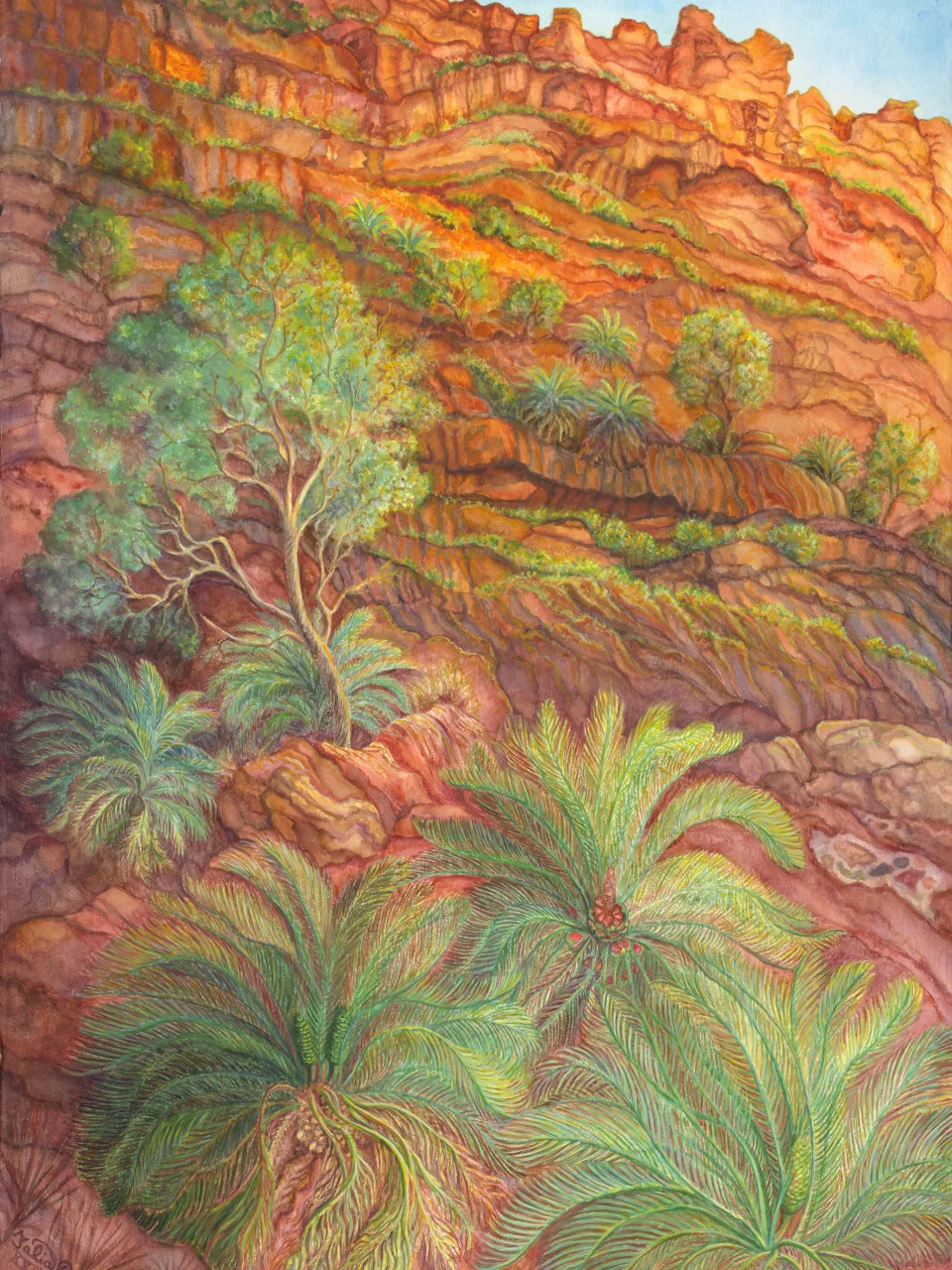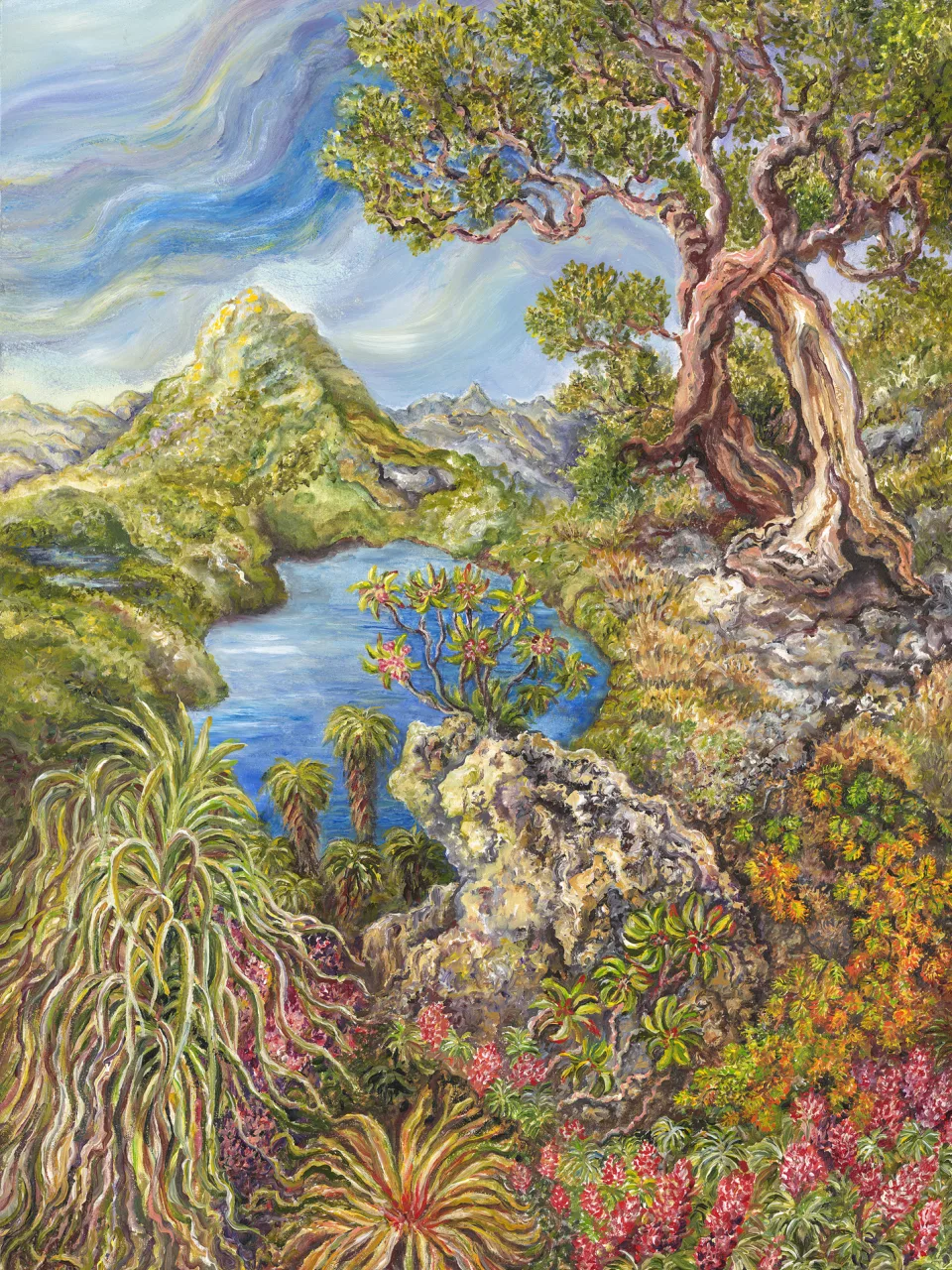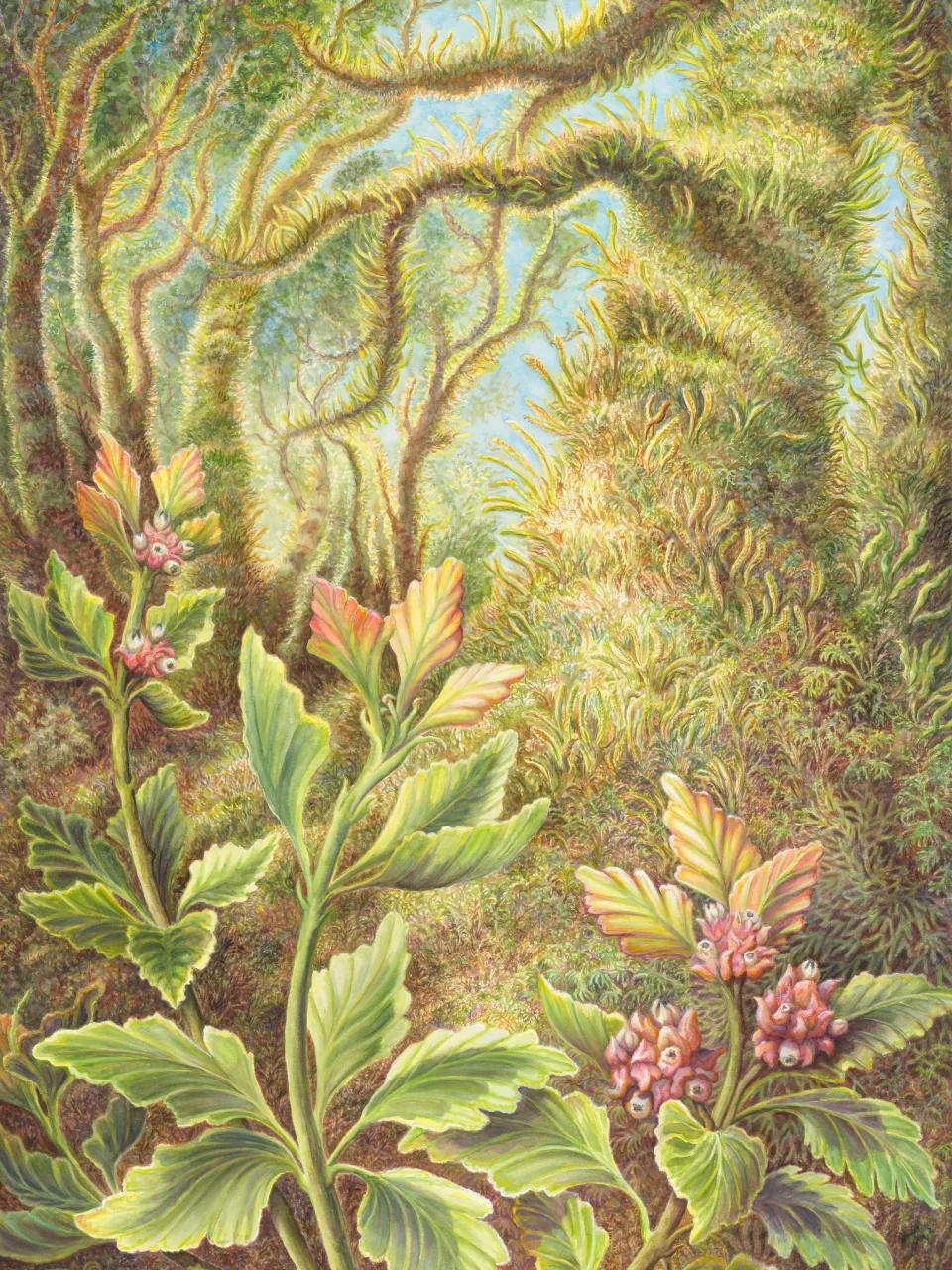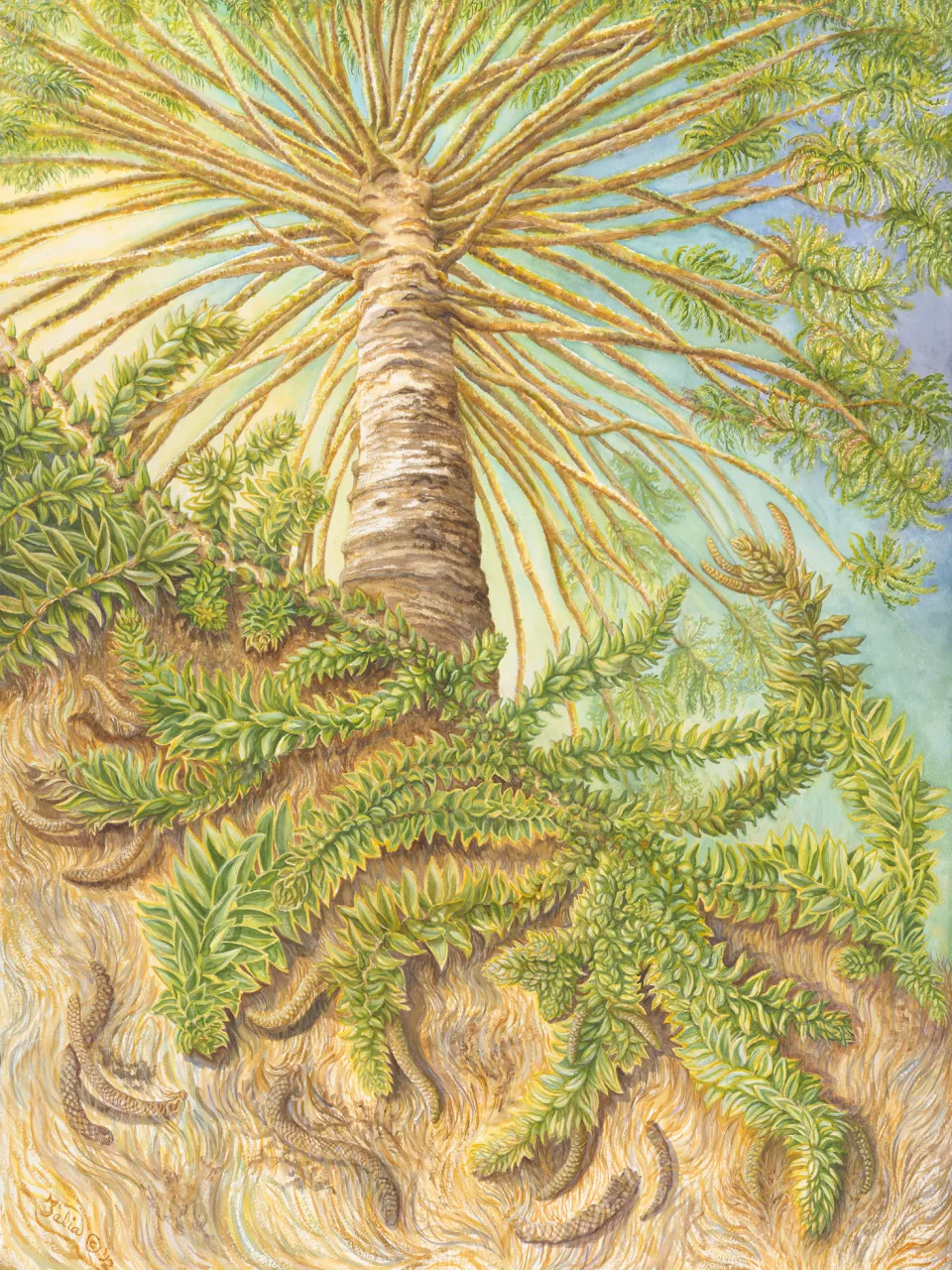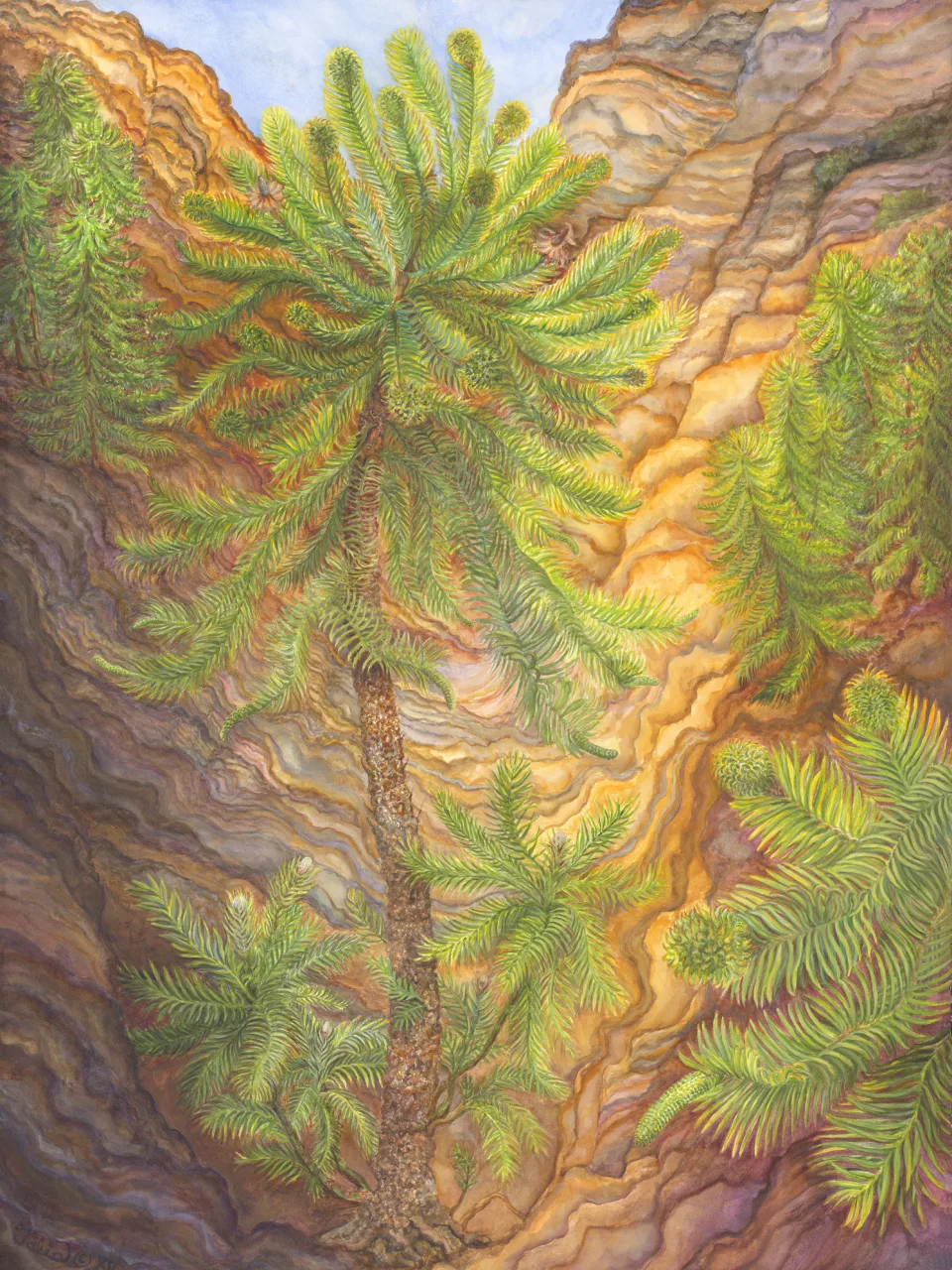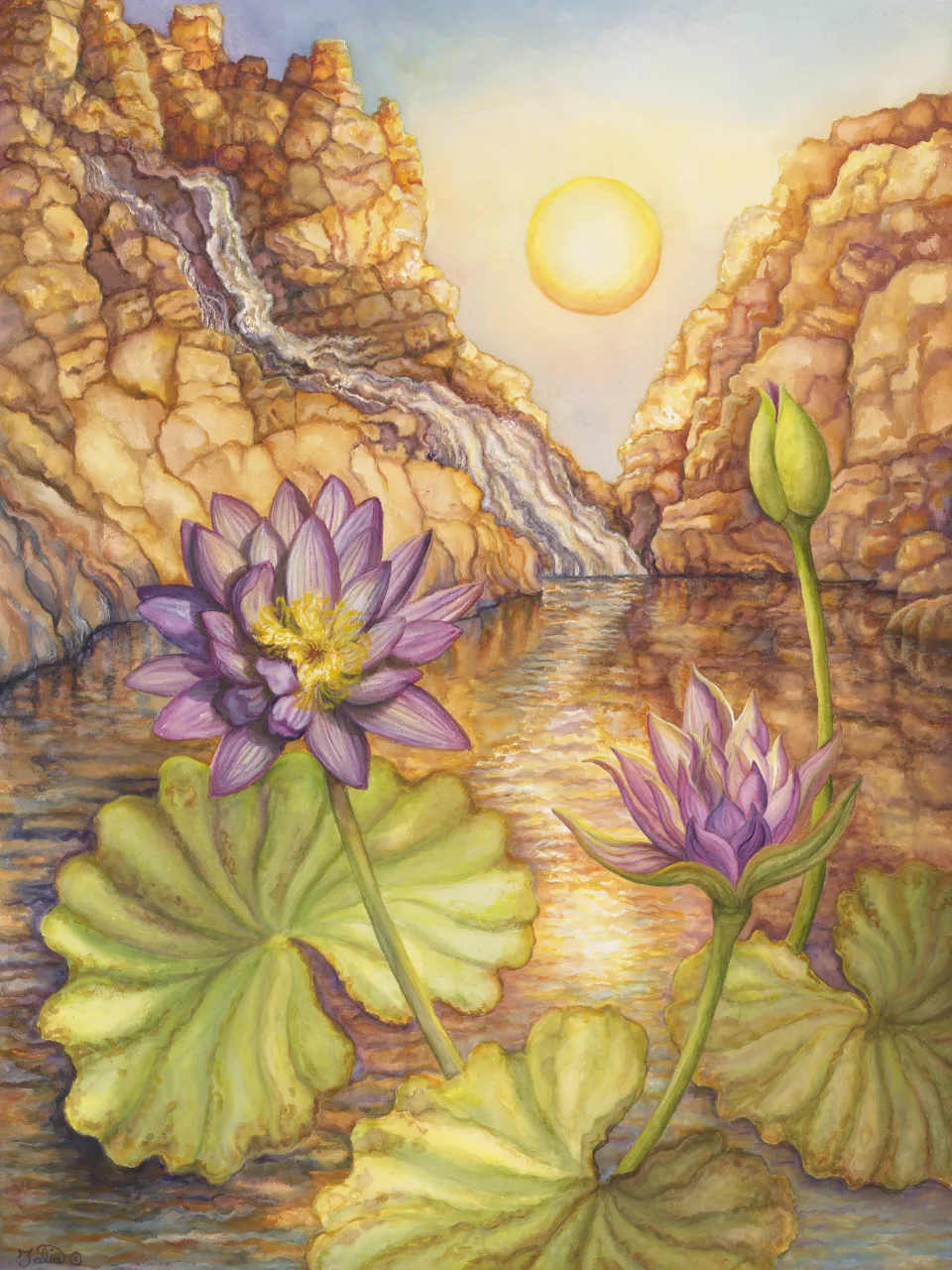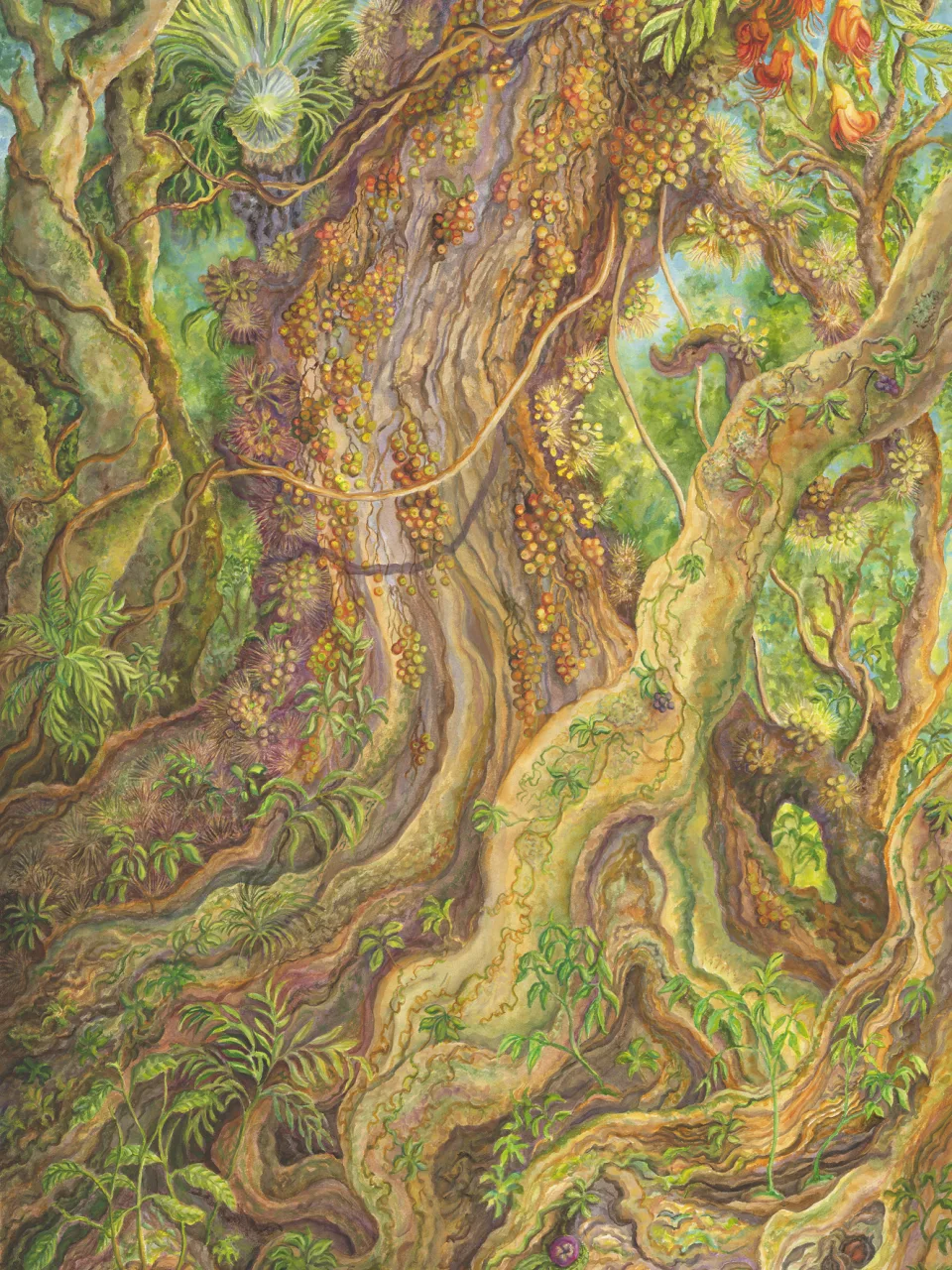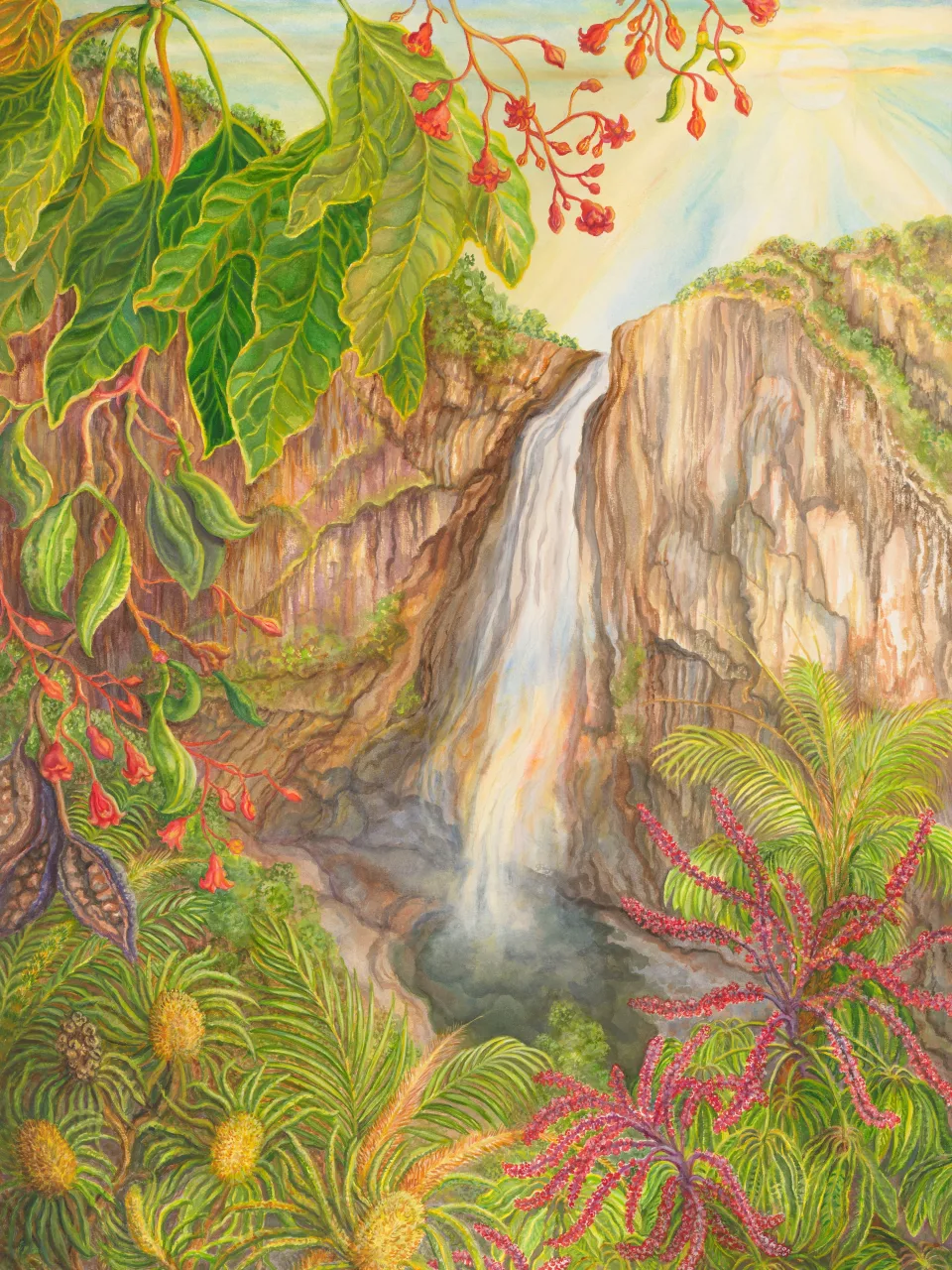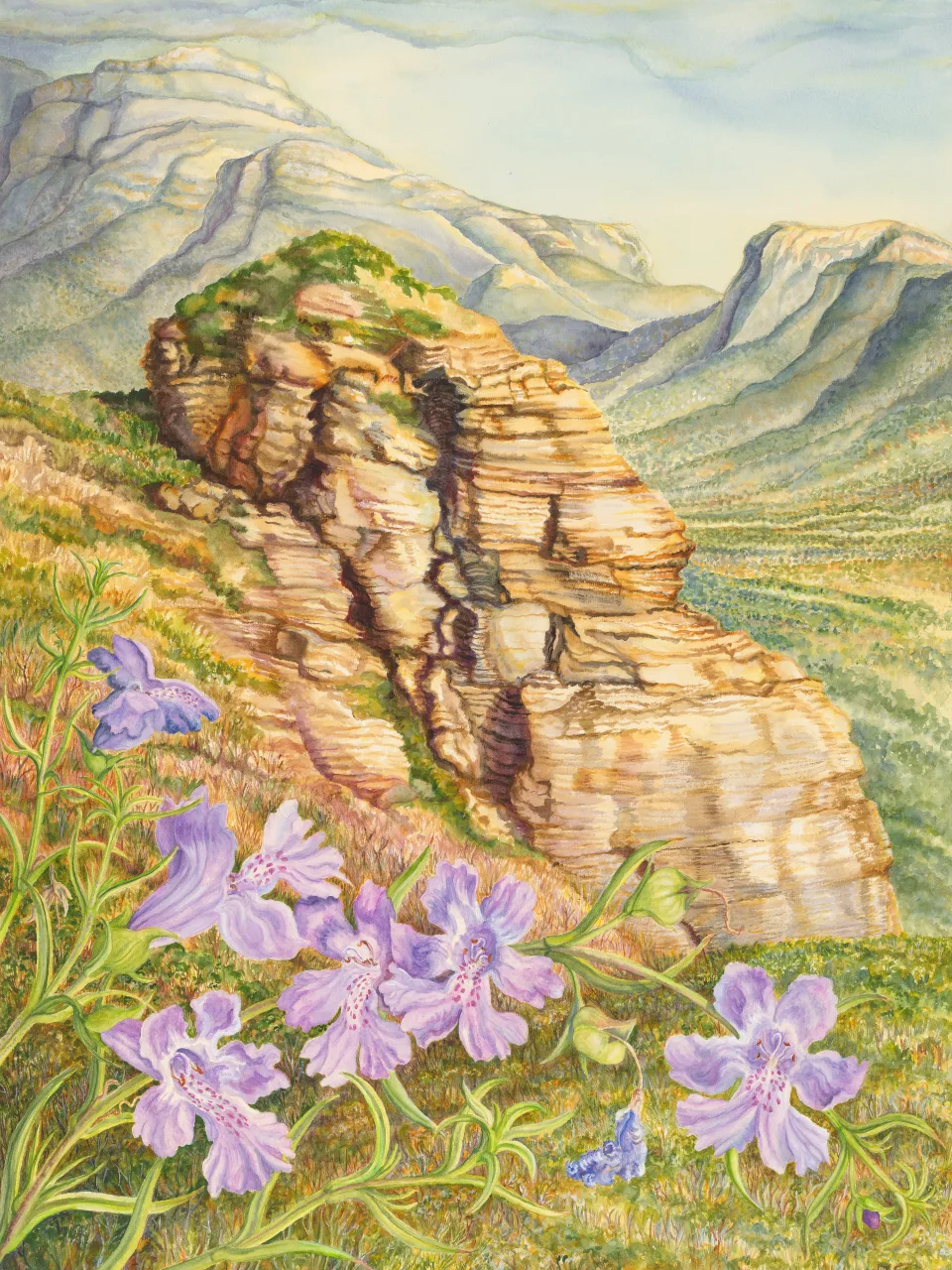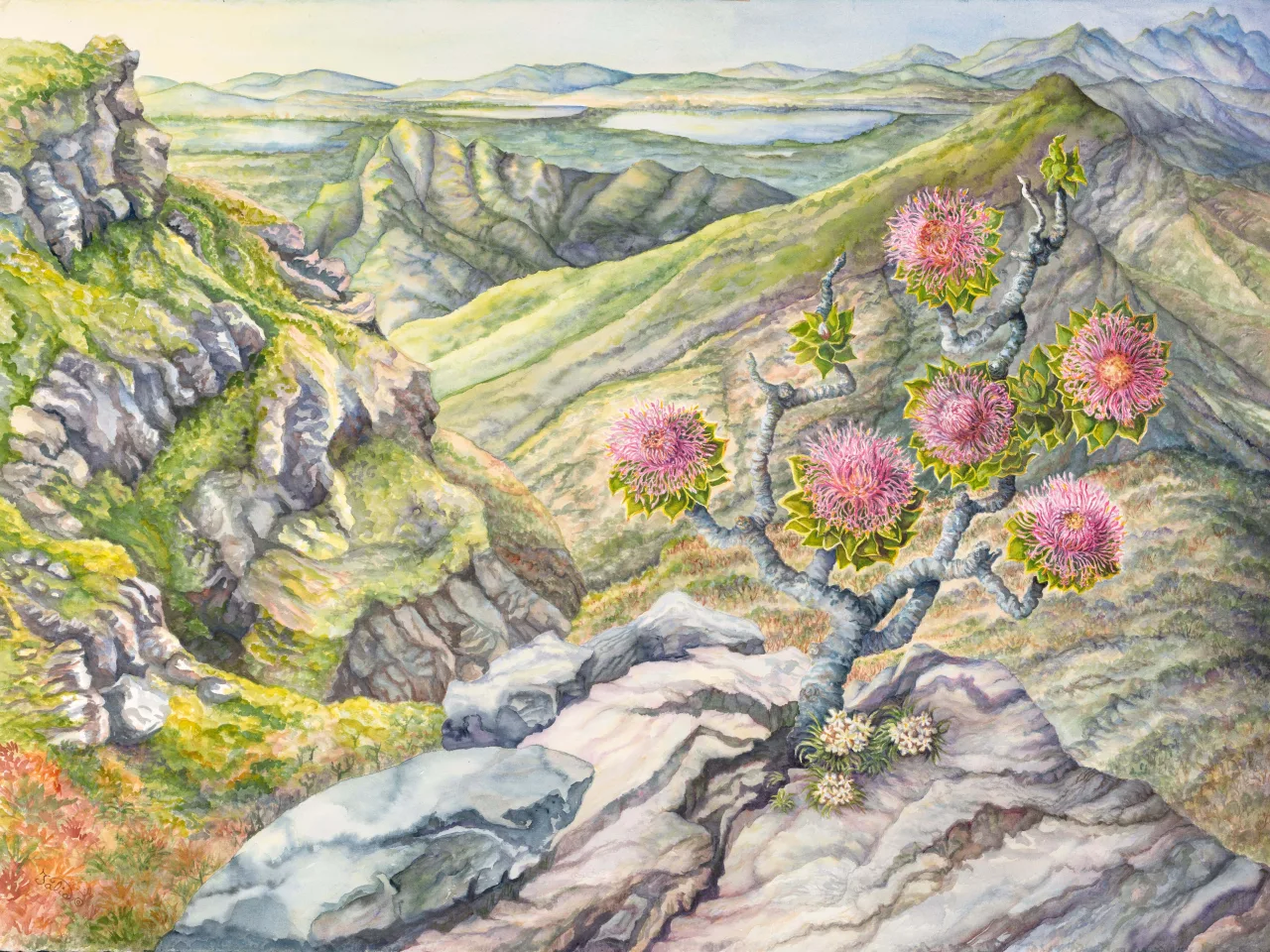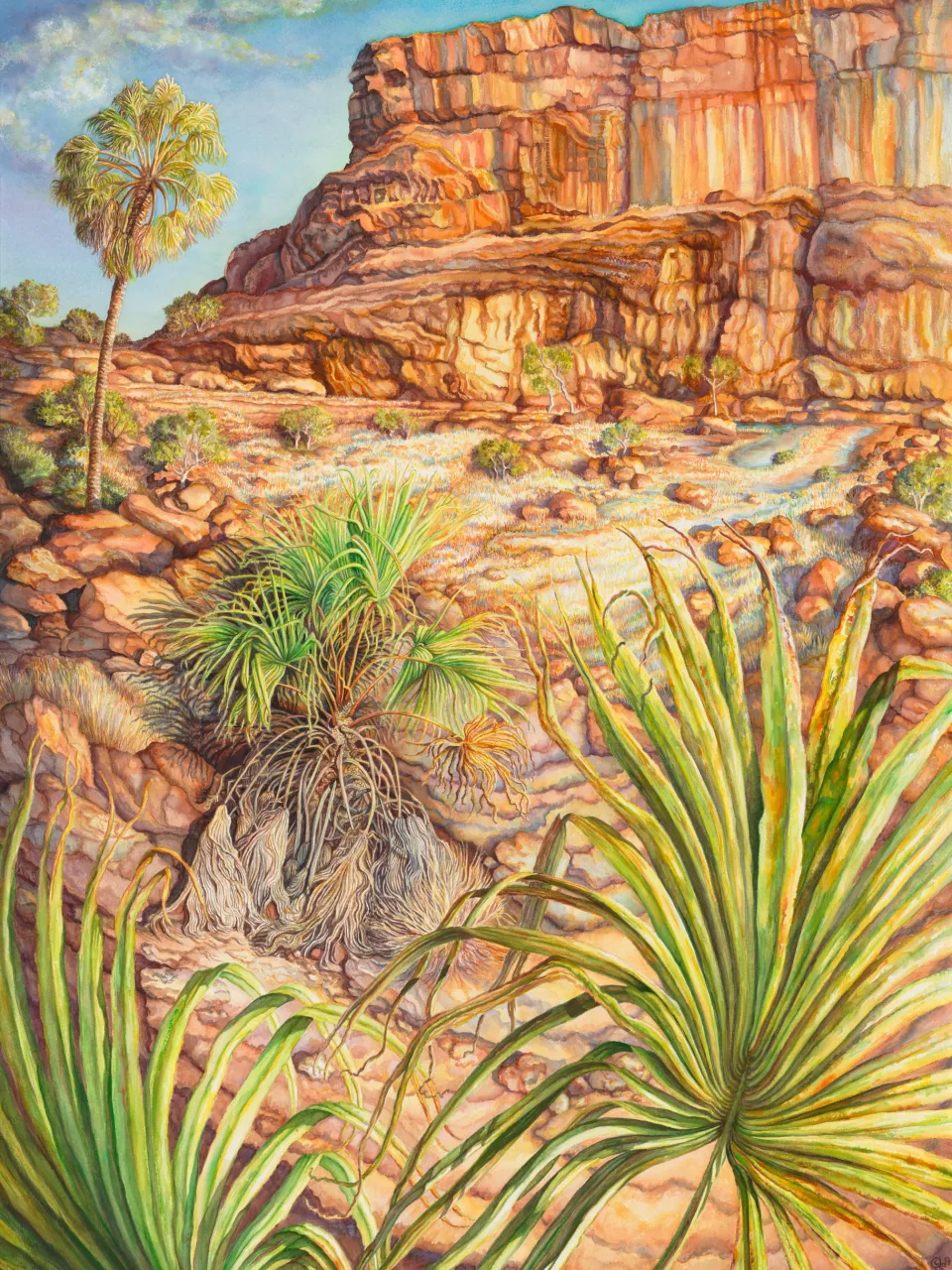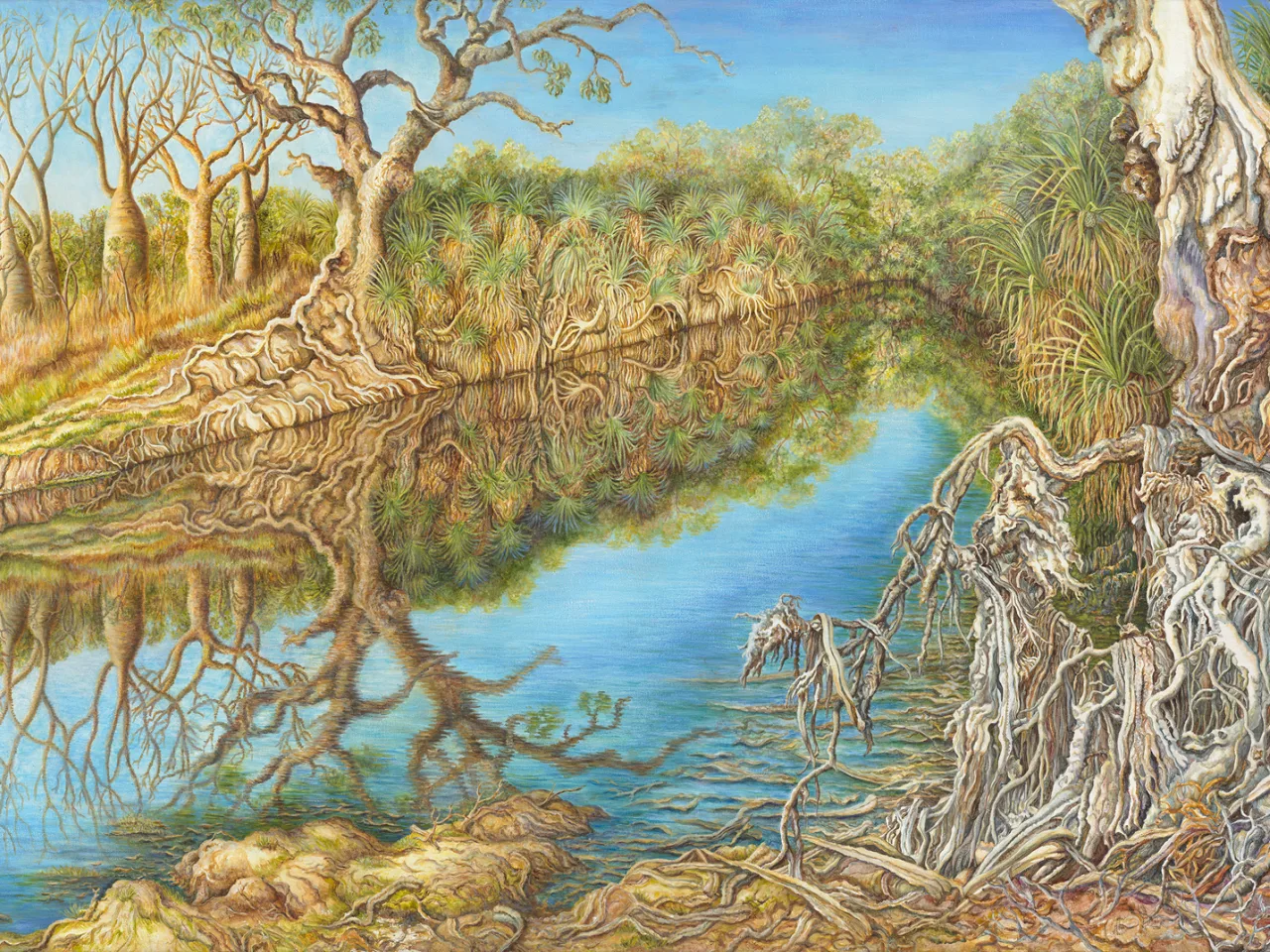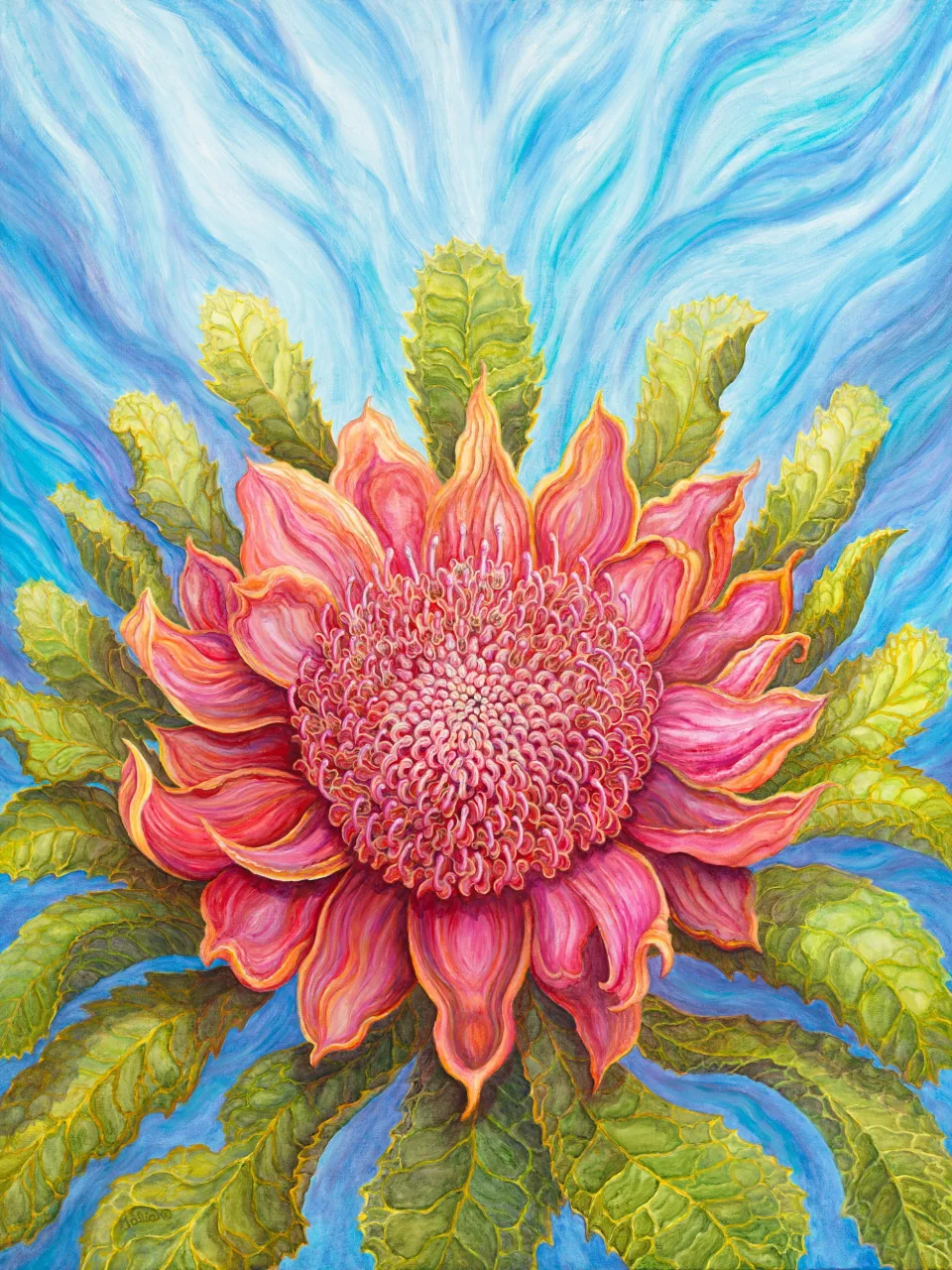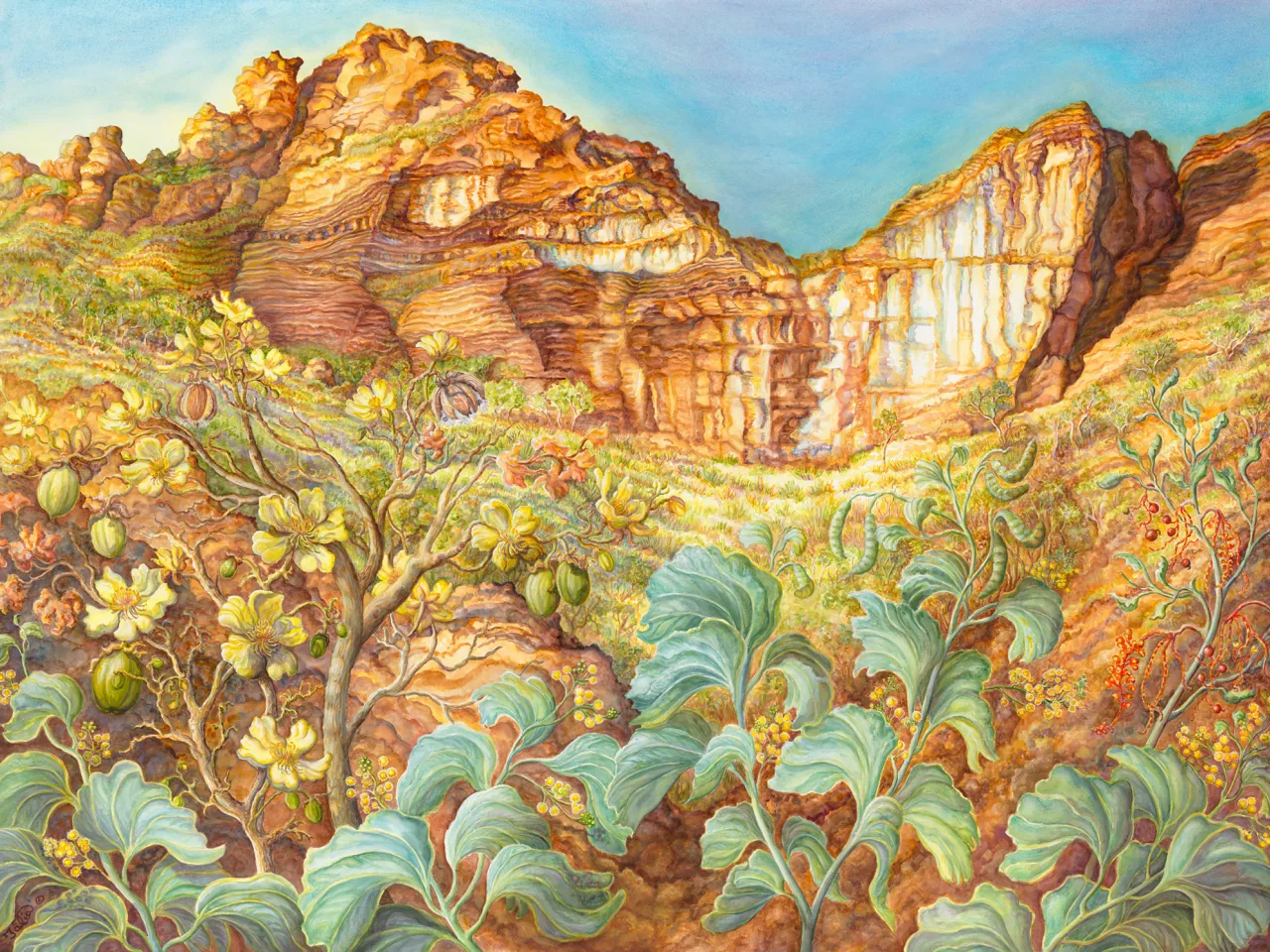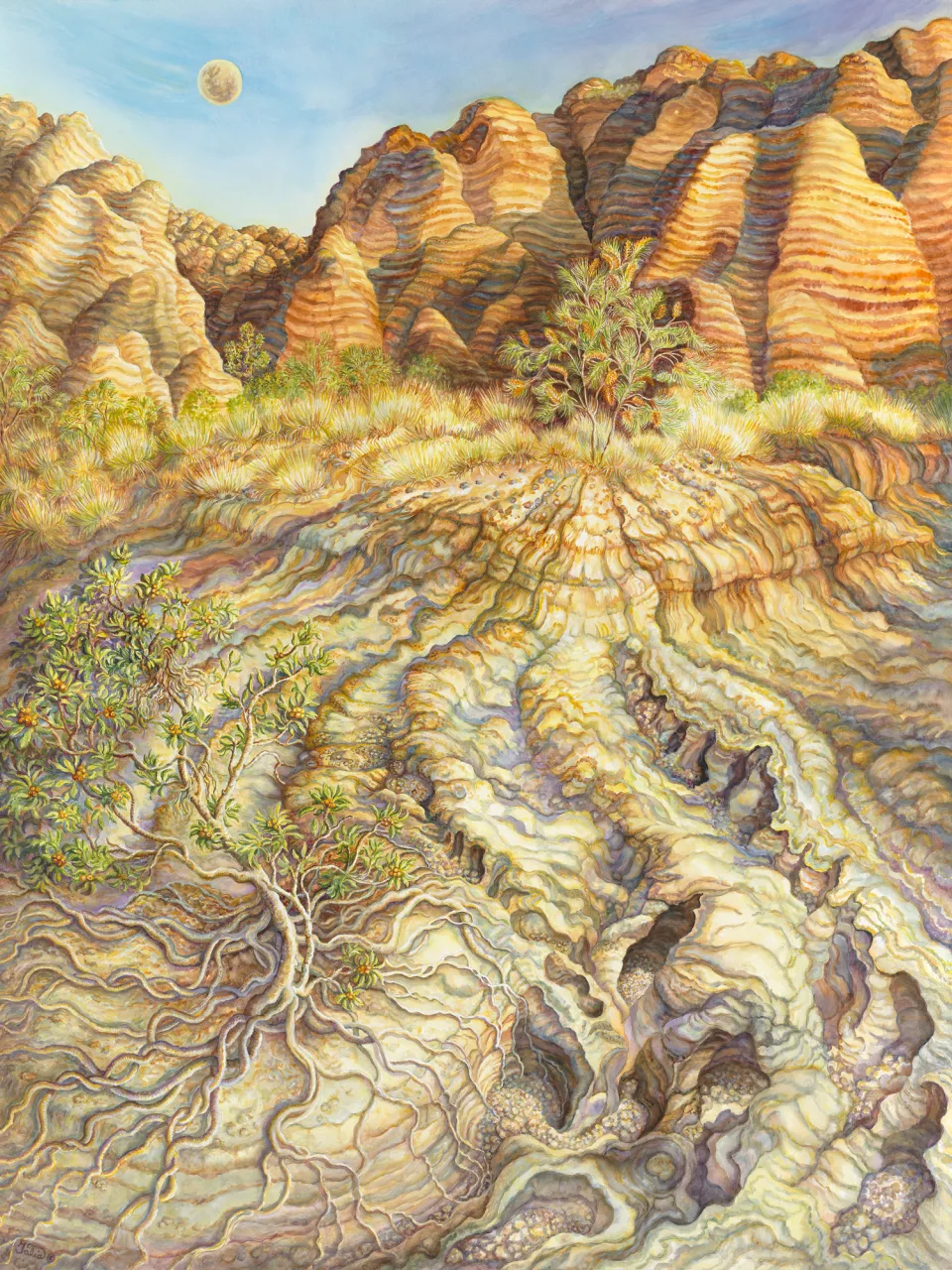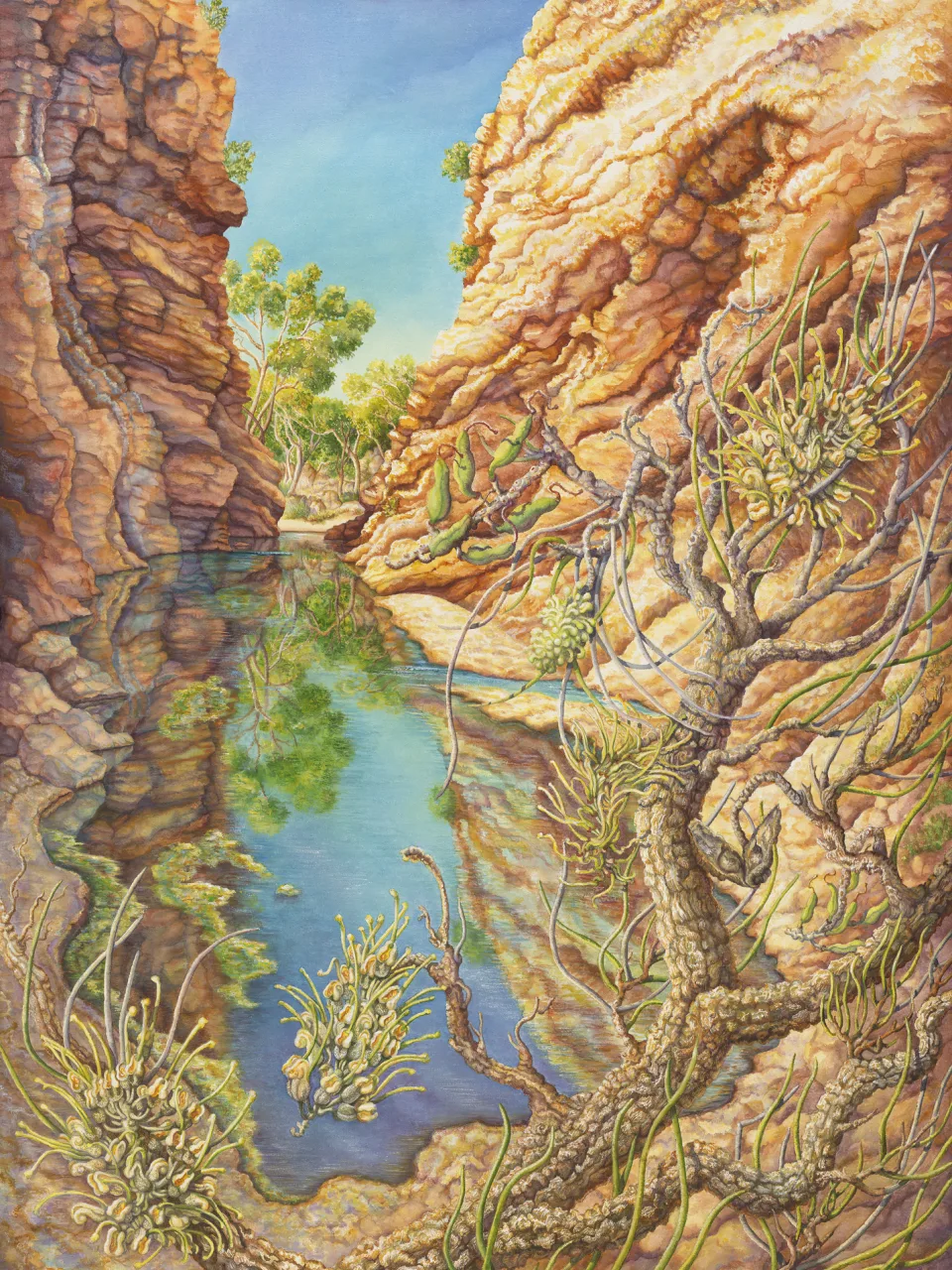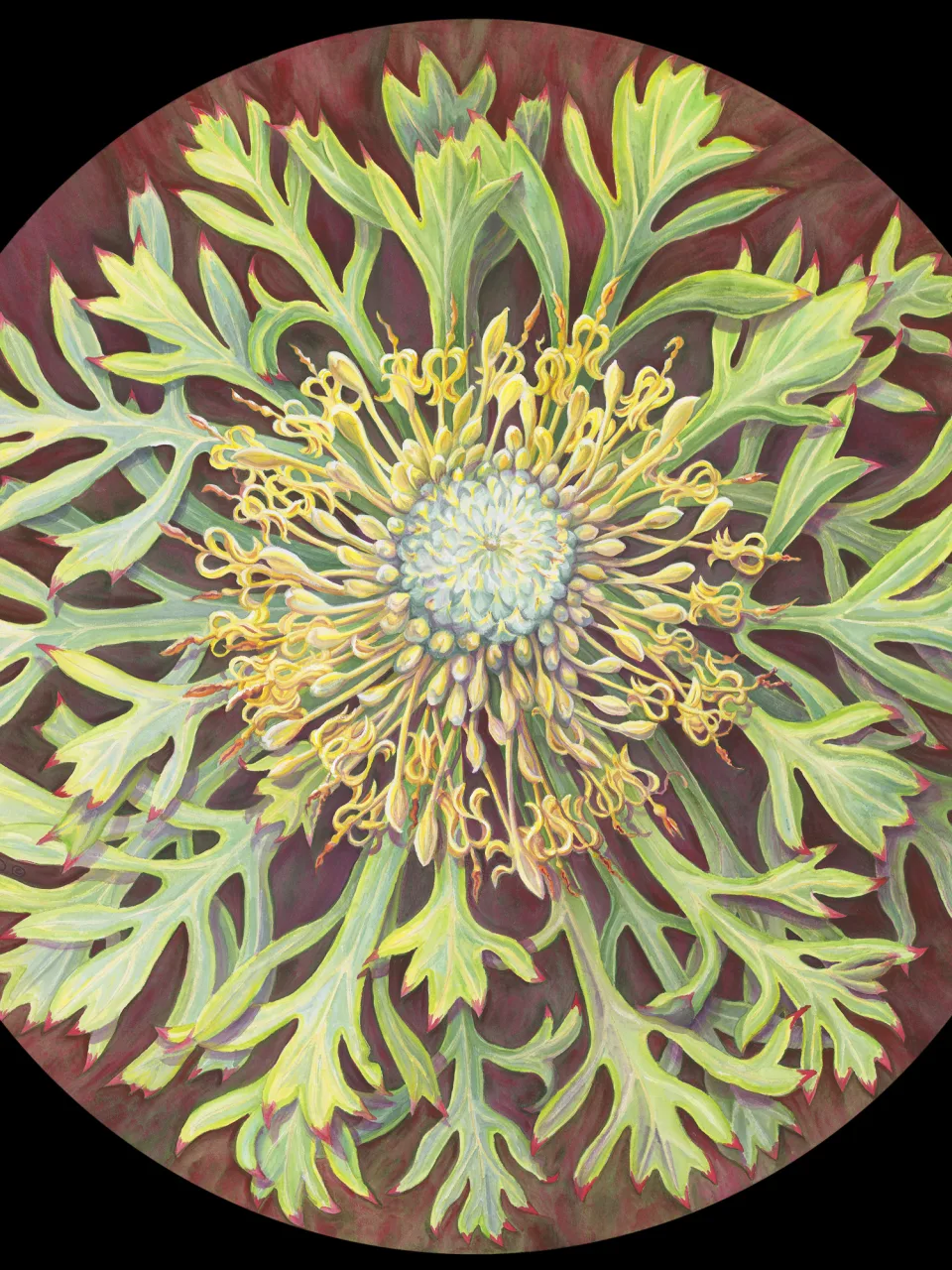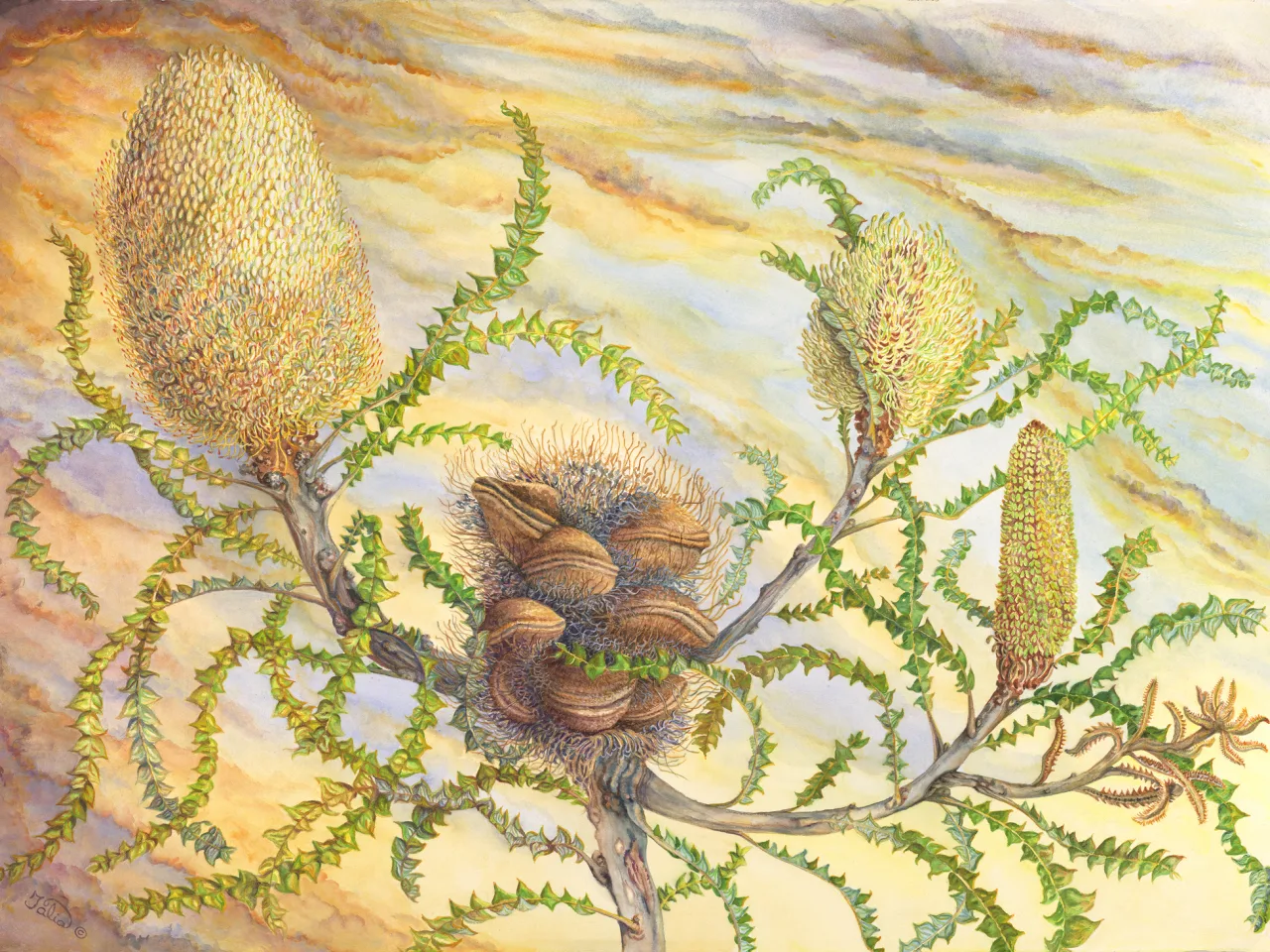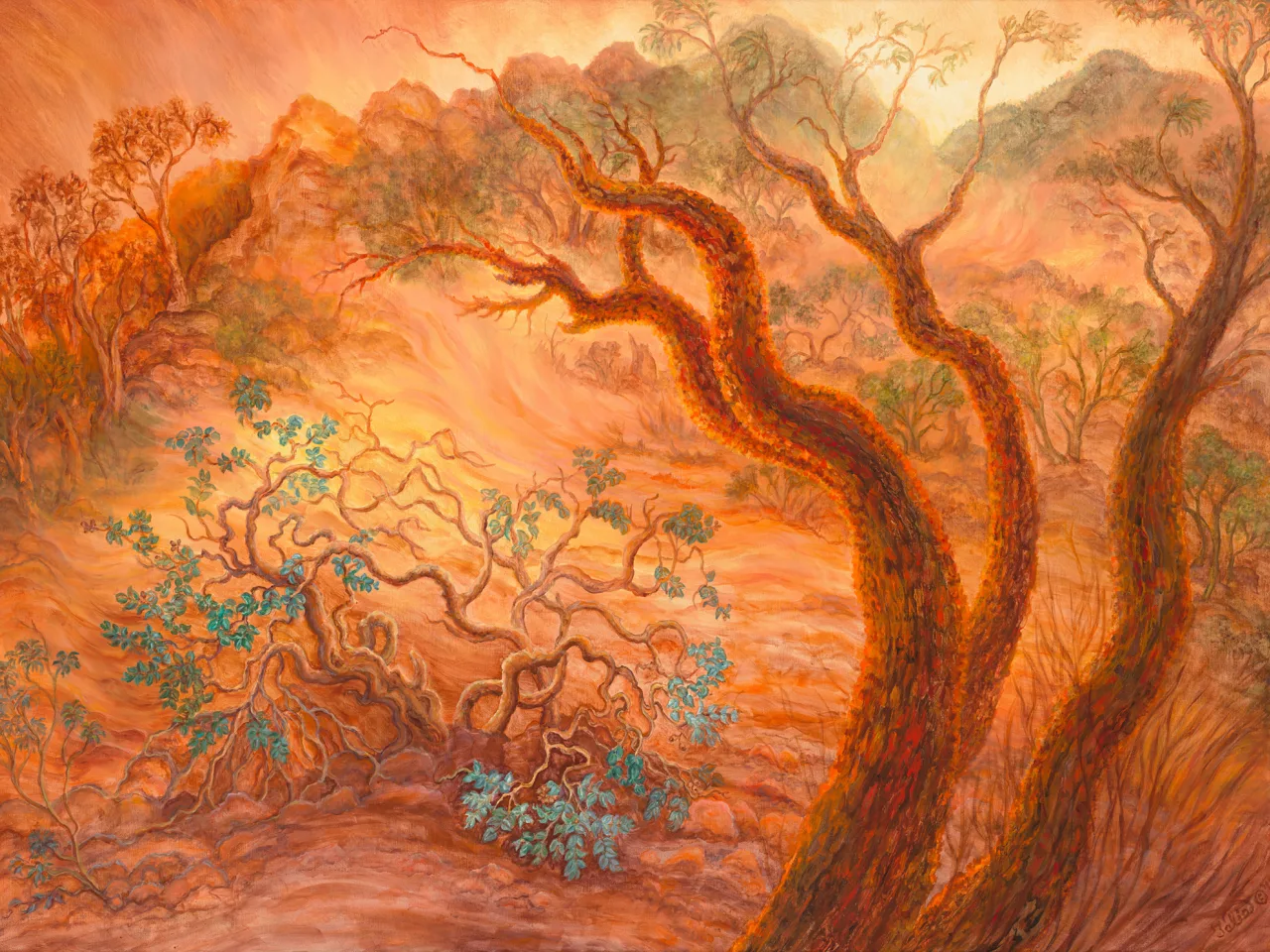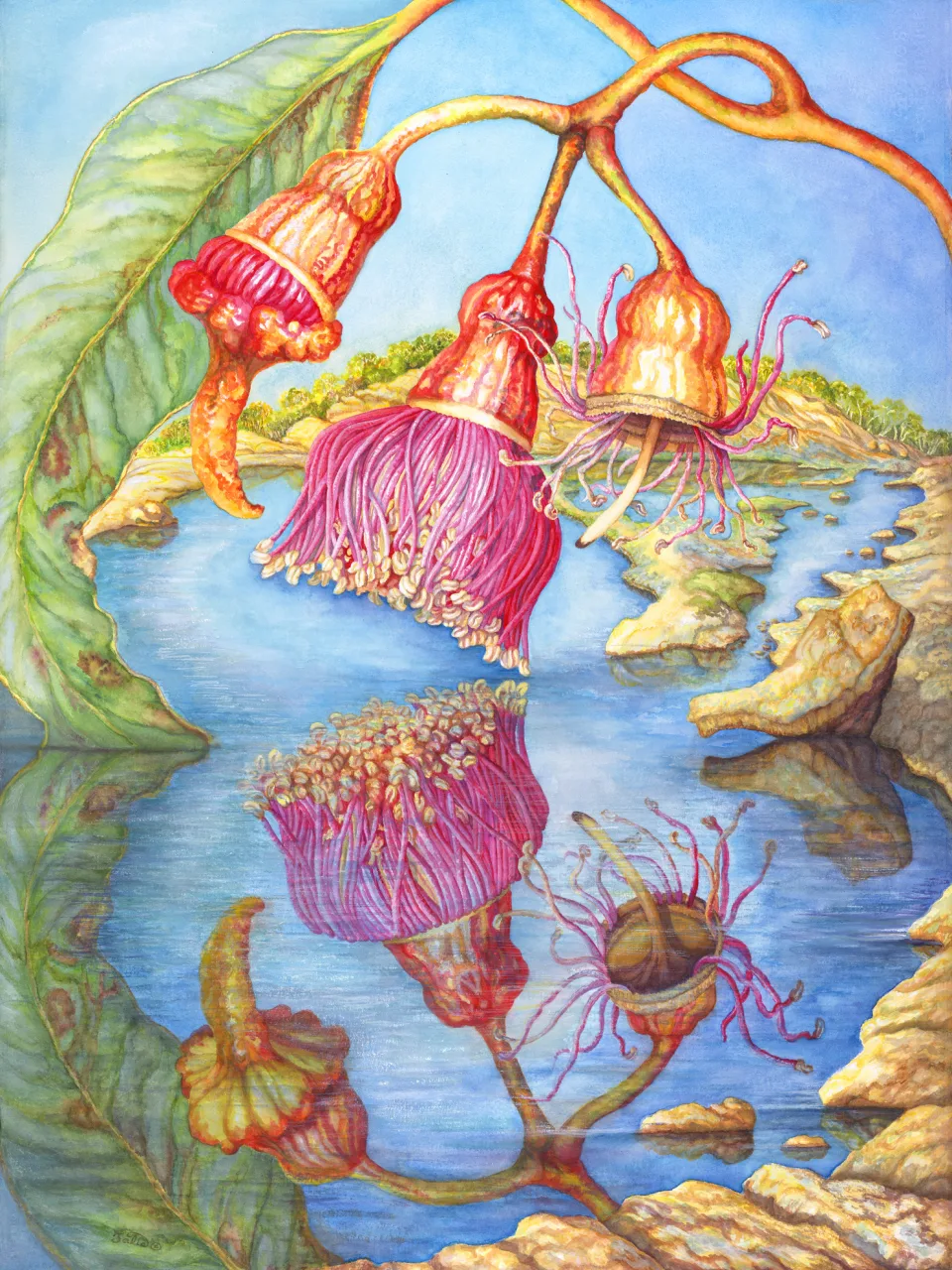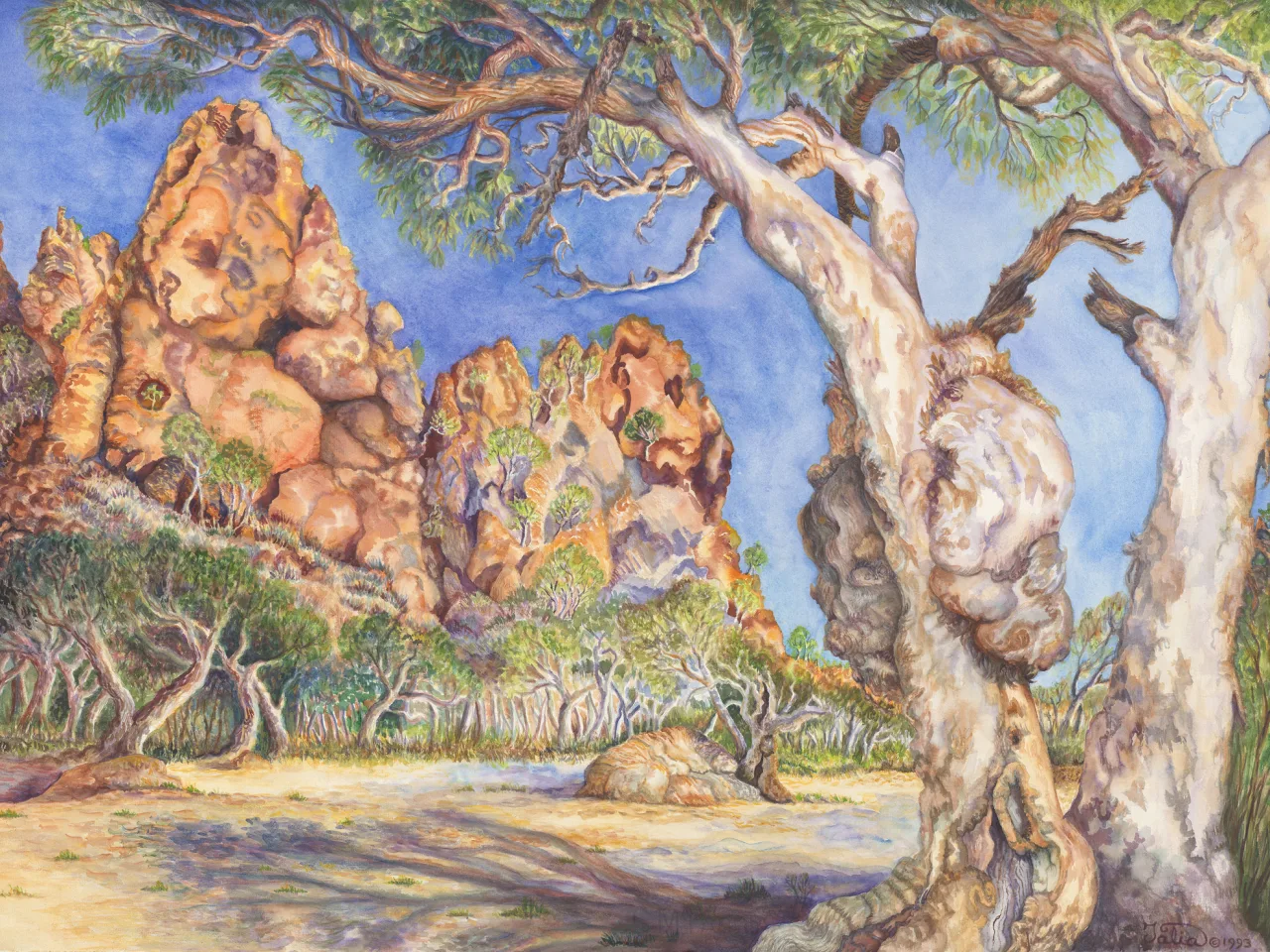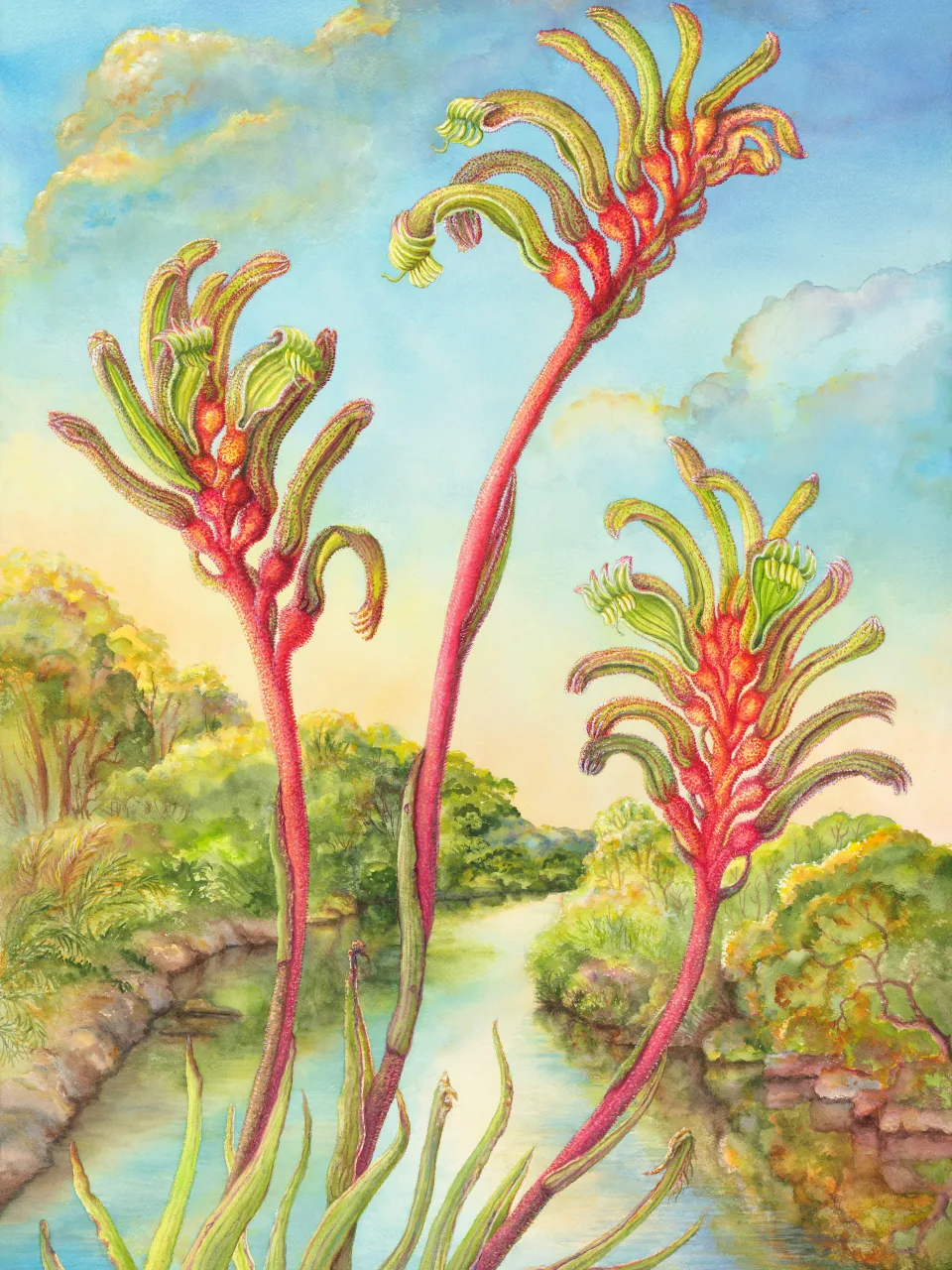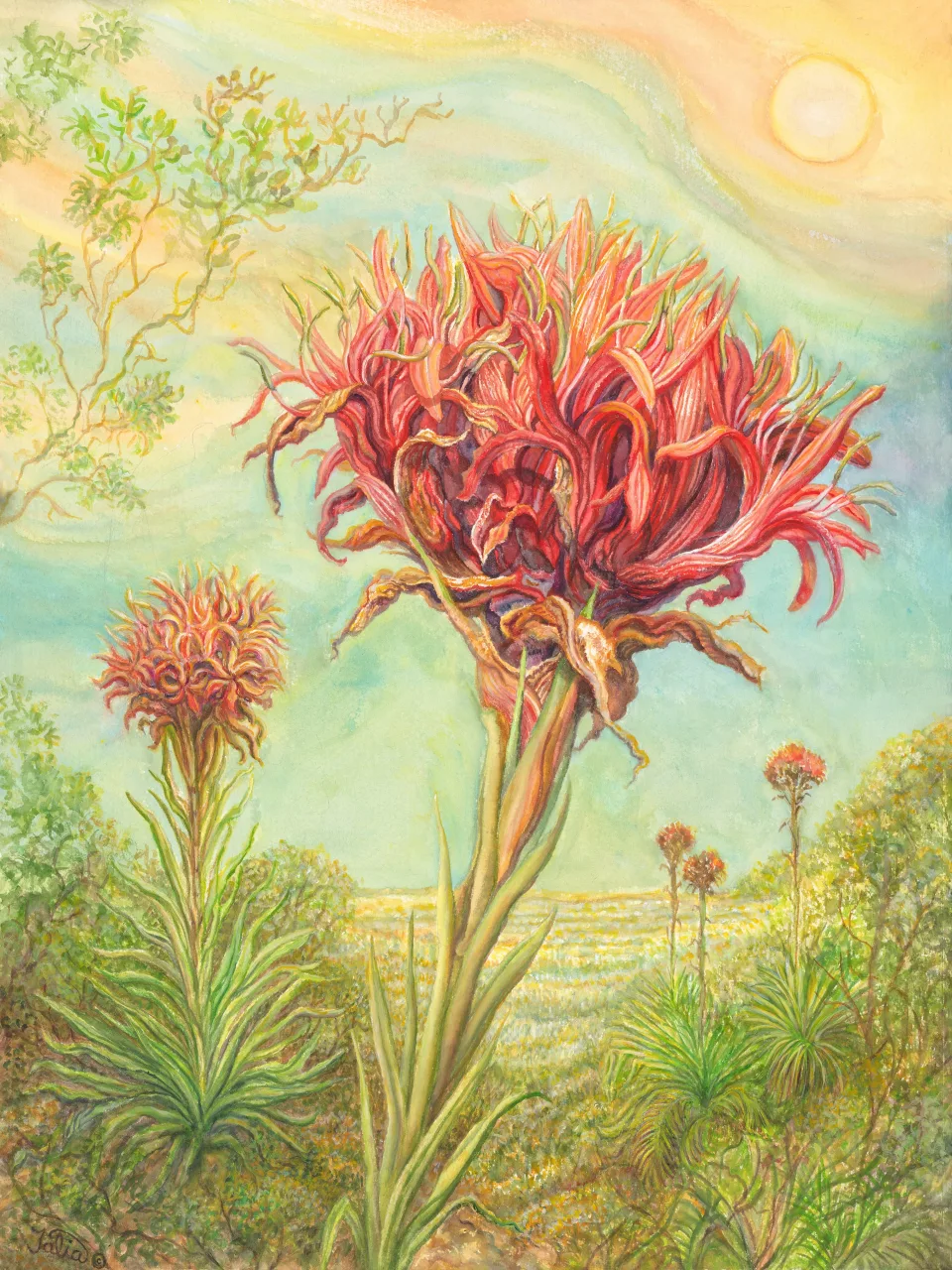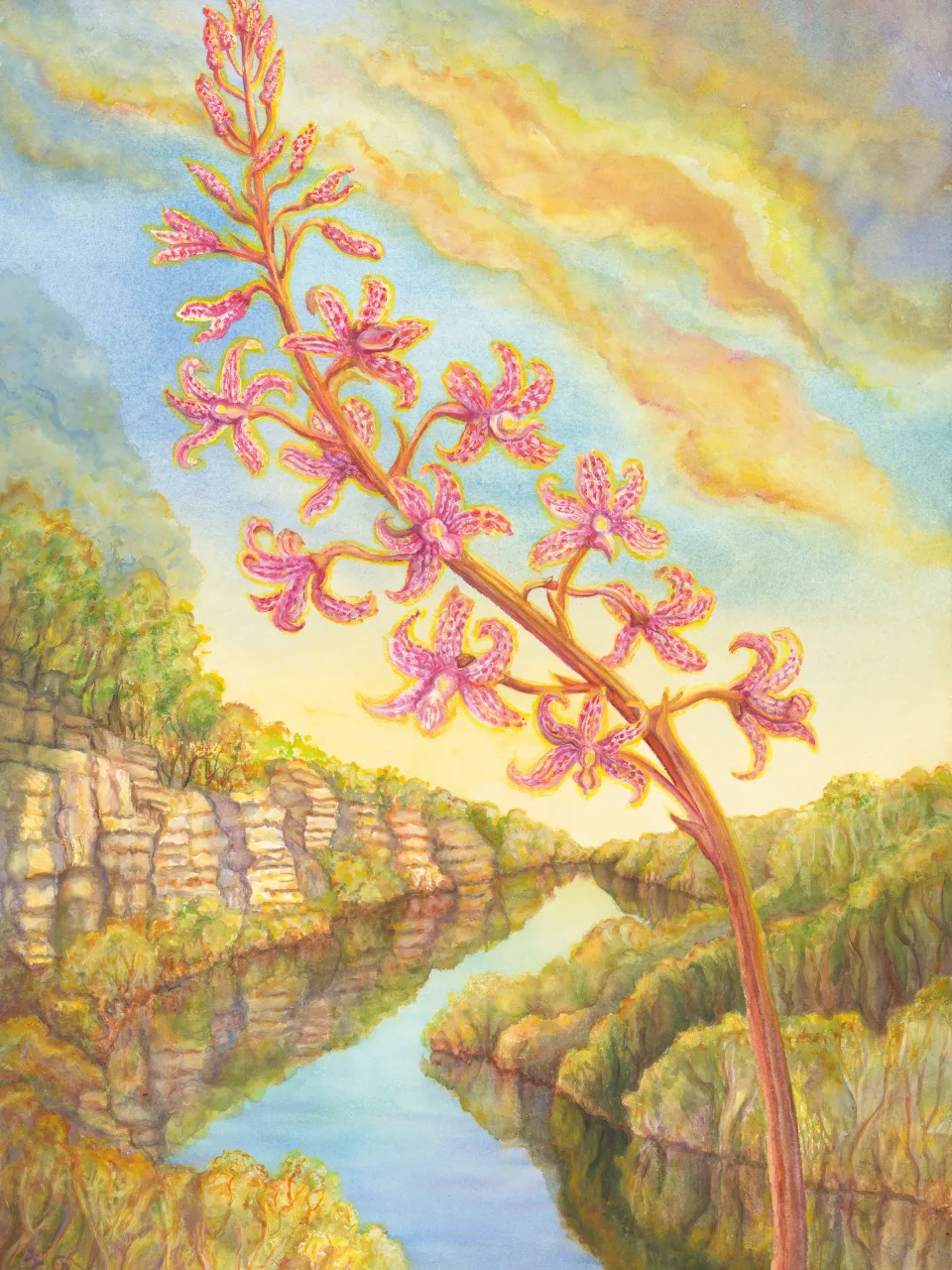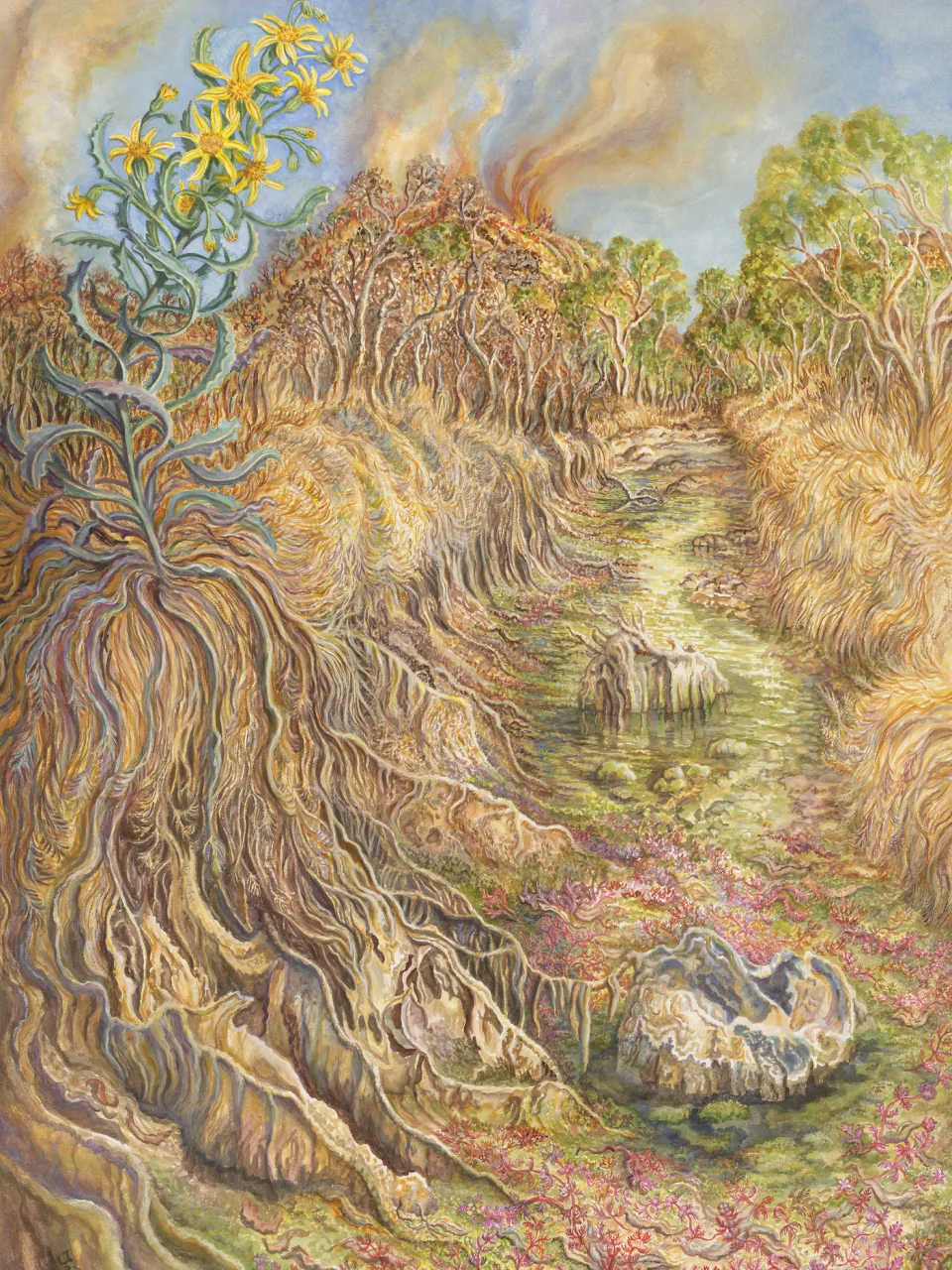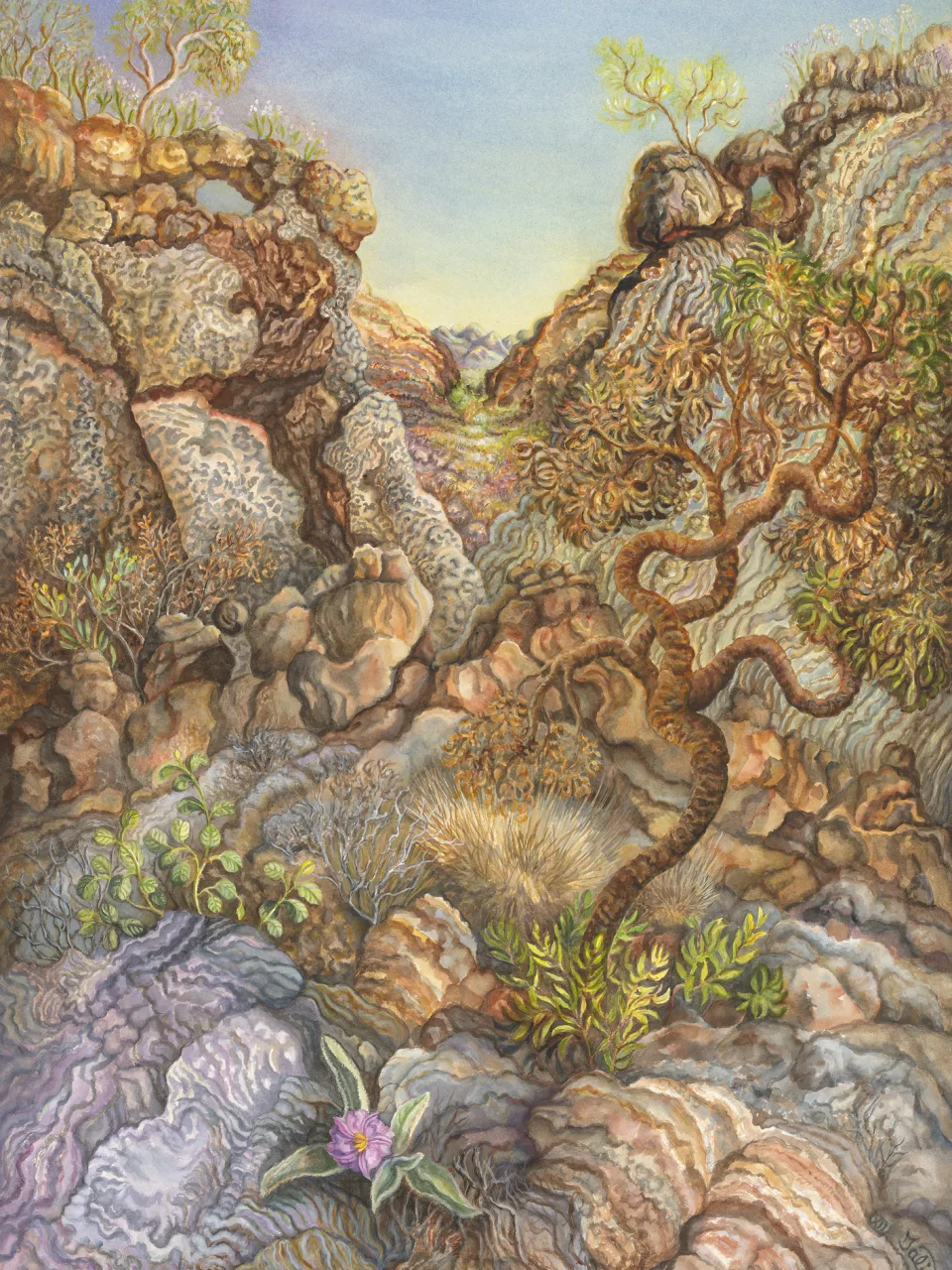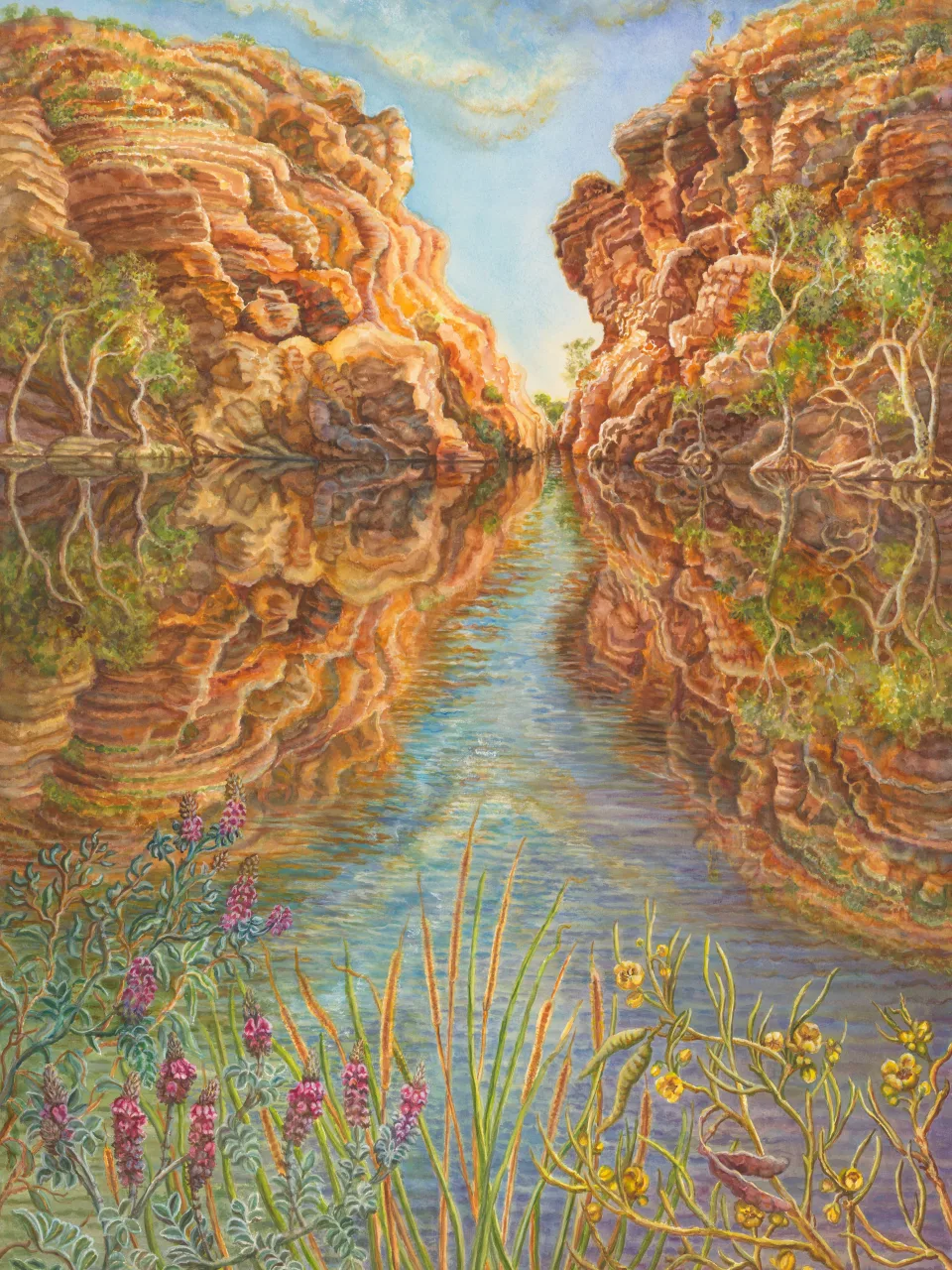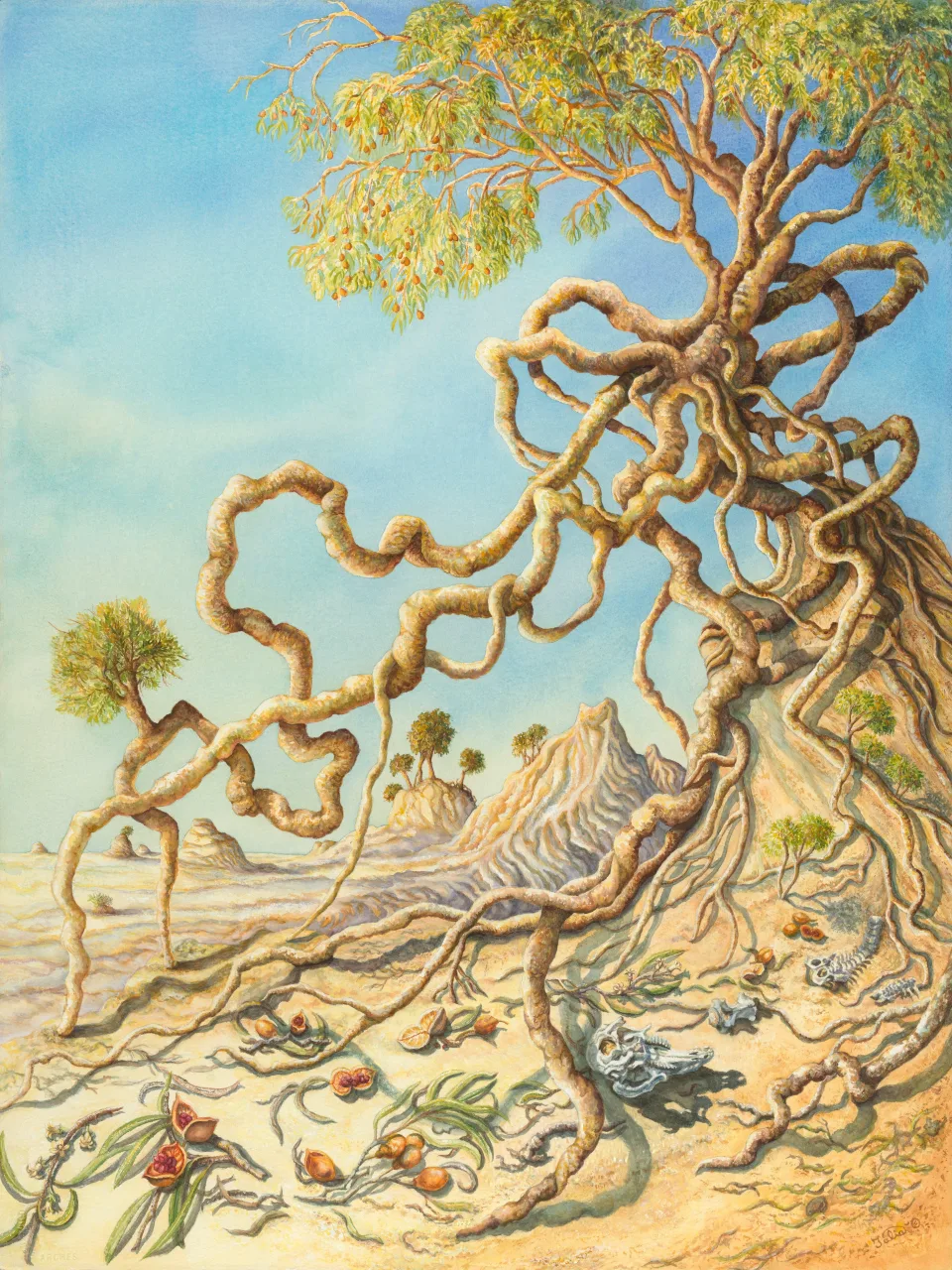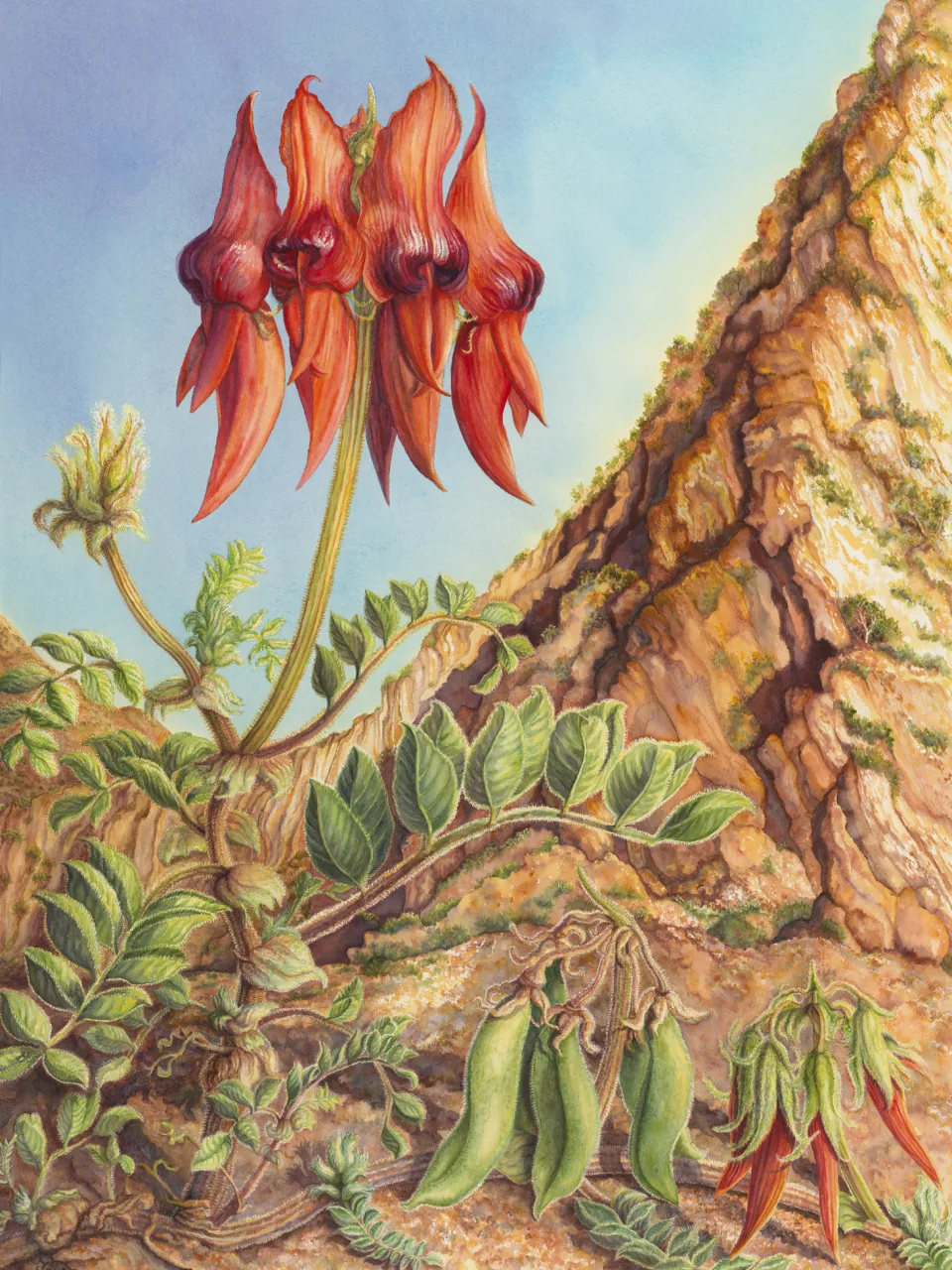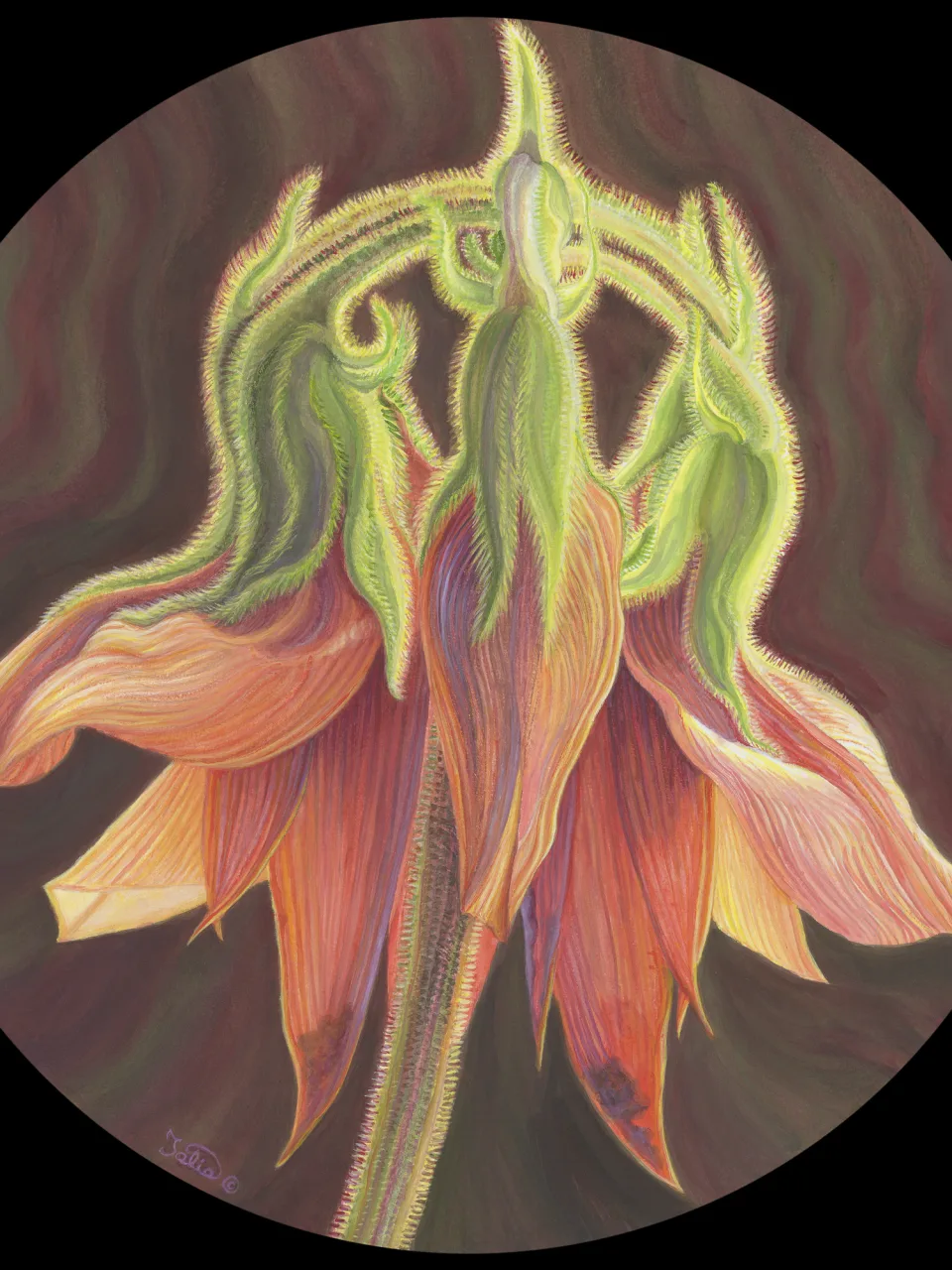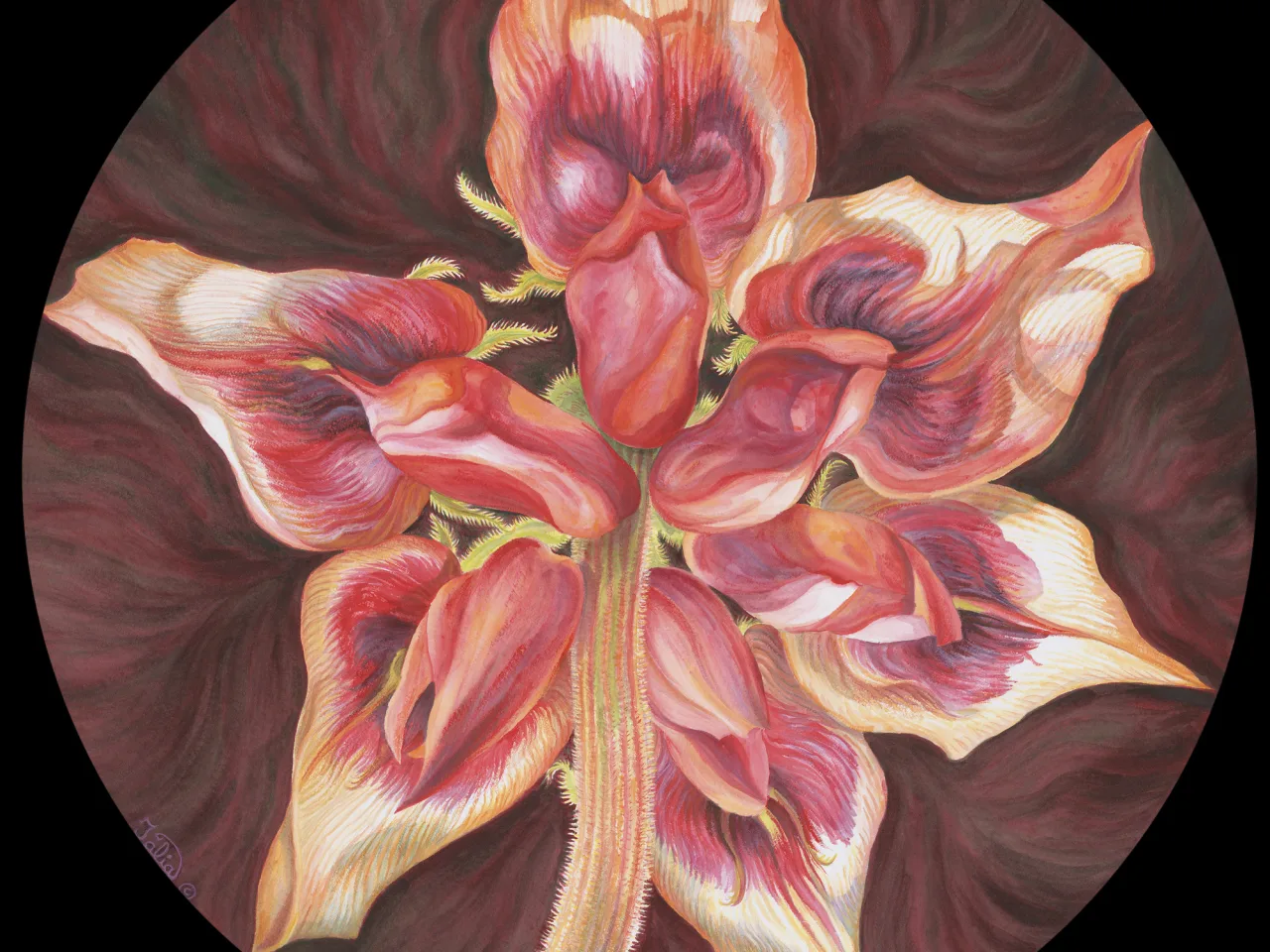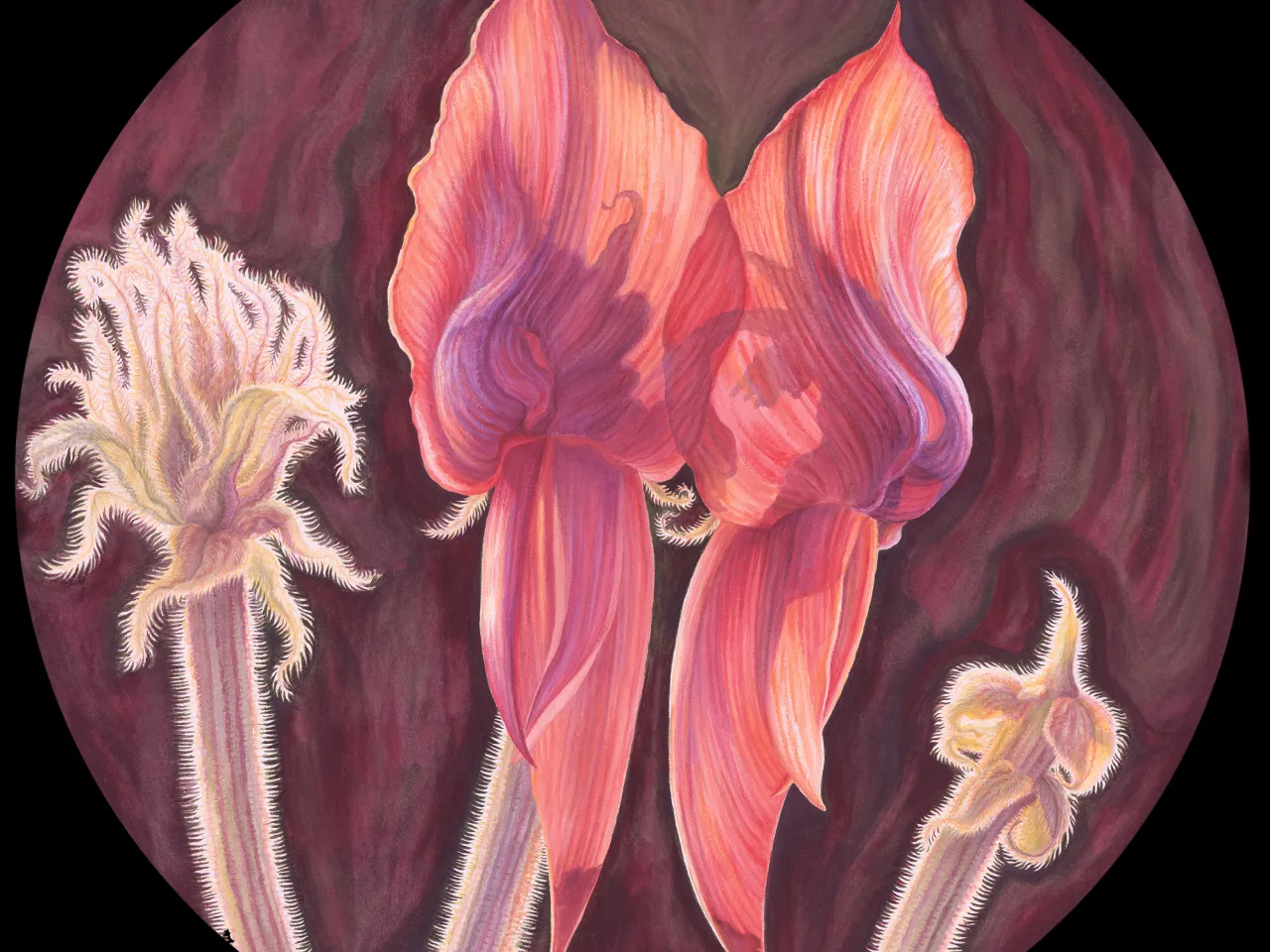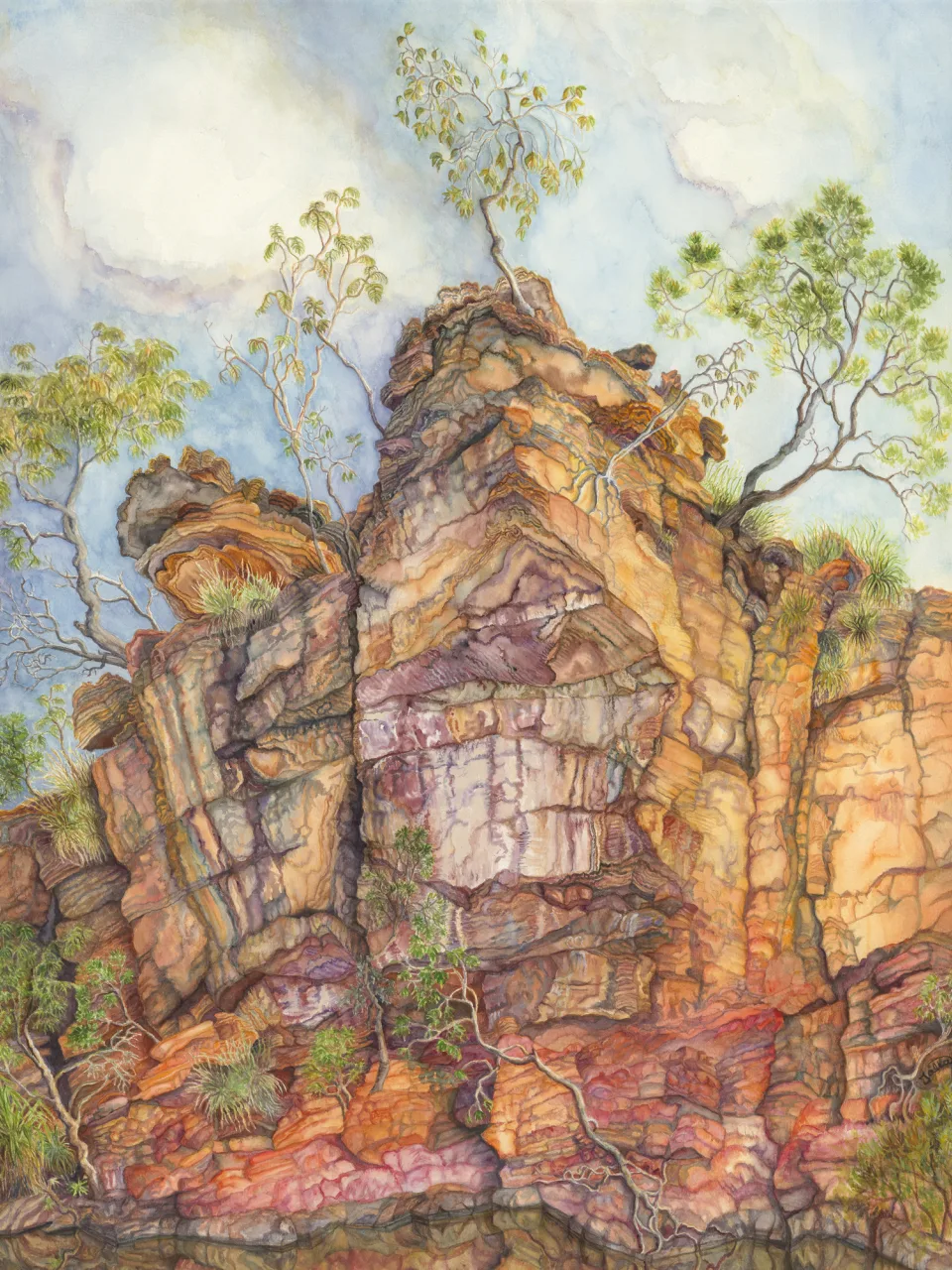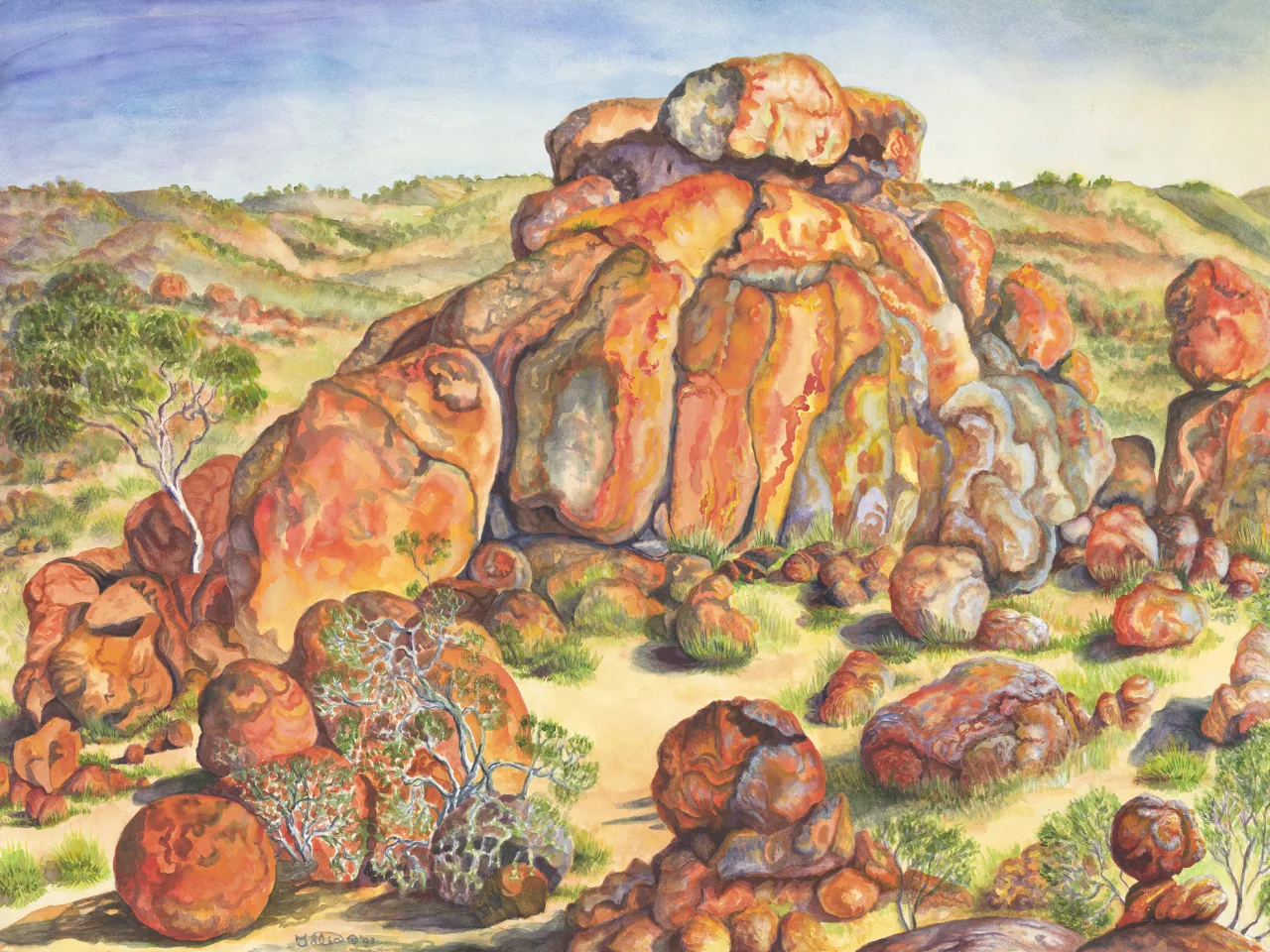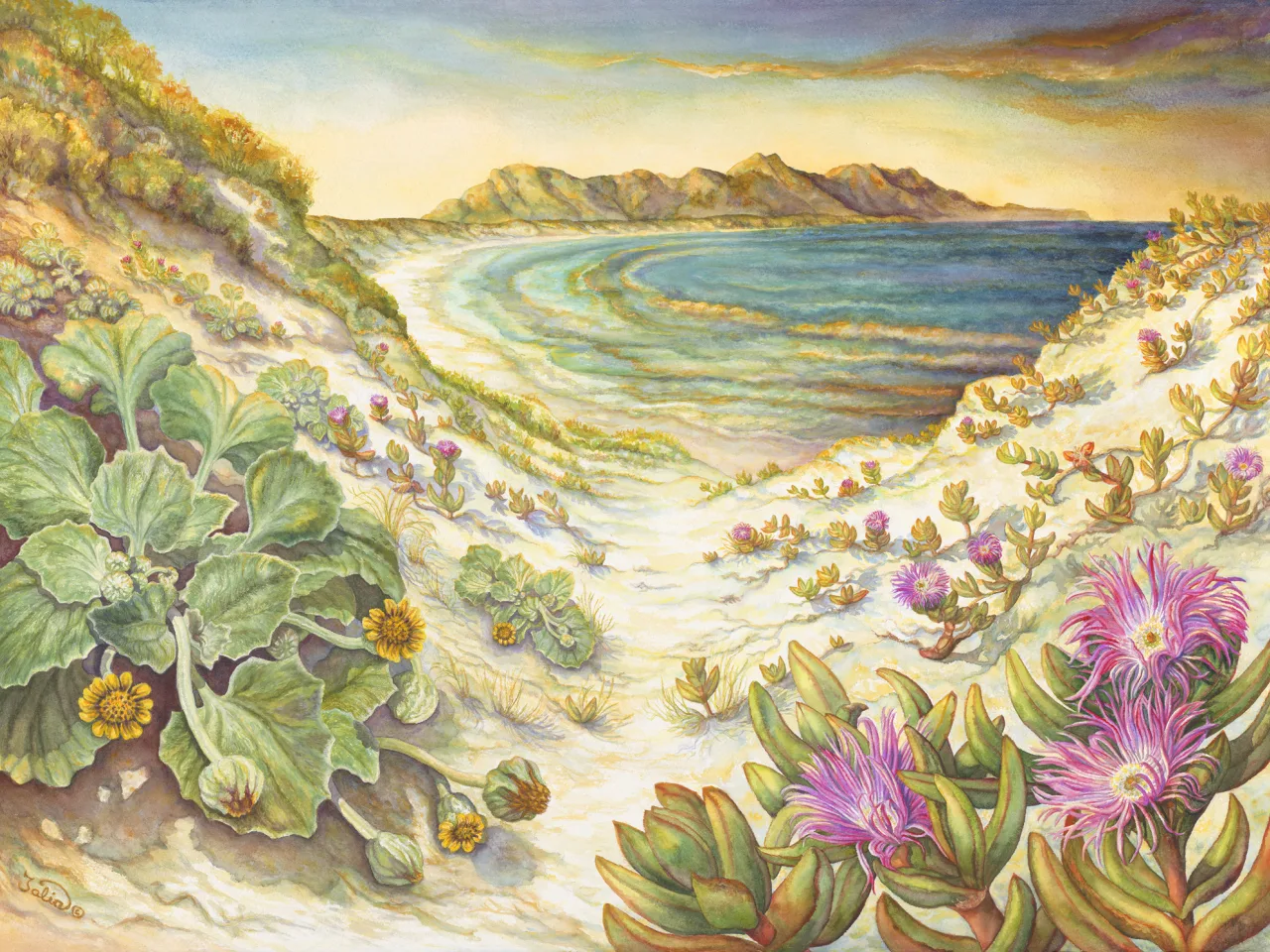Artwork 18 Mine Host
Section 19
In a Gondwanan Subtropical Rainforest of the North (Gingers and Palms)
Lamington National Park, Queensland, Queensland
- 1. Agathis robusta (kauri pine)
- 2. Alpinia caerulea (blue ginger)
- 3. Archontophoenix cunninghamiana (Bangalow palm)
- 4. Ficus watkinsiana (strangler fig)
- 5. Linospadix monostachya (walking stick palm)
Artwork 18
Buy a print
Limited edition giclee archival quality print on 310 gsm Ilford cotton rag (from an original work in watermedia on watercolour board, 102 cm high x 76 cm wide)
from the artist
This work was inspired by visits to one of the largest subtropical rainforests in the world—Lamington National Park in southern Queensland, with its spectacular waterfalls and mountains amidst rainforest scenery. We explored tracks from both access areas (Binna Burra and Green Mountains/O’Reilly’s) and found many examples of “strangler figs”, which envelop and consume the host tree, as in this painting, leaving a filigree network of roots and stems decorated with bracket fungi, through which one can view the rainforest beyond!
This strangler fig is probably Ficus watkinsiana (Moraceae family). Early examples of modern plants like Ficus were present in the richly diverse floras of South America, dating from the Late Cretaceous (from about 90 mya) (see also Section 32 “Versatile Figs”).
Towering kauri trees (Agathis robusta, visible in the background of the work) were draped with vines and dangling roots, and hosted epiphytes such as ferns and orchids. An undergrowth of palms and gingers thrived on filtered sunlight. The palm on the left with divided fronds, fishtail-like terminal leaves, and long red pendulous spikes of berries, is a “walking stick palm” (Linospadix monostachya)—and yes, they were used for walking sticks! On the right is a tall, feather-leaved “Bangalow palm” (Archontophoenix cunninghamiana) with orange-red fruits, and in the foreground are “native gingers” (Alpinia caerulea—“blue ginger”) with blue-coloured berries (which are edible).




